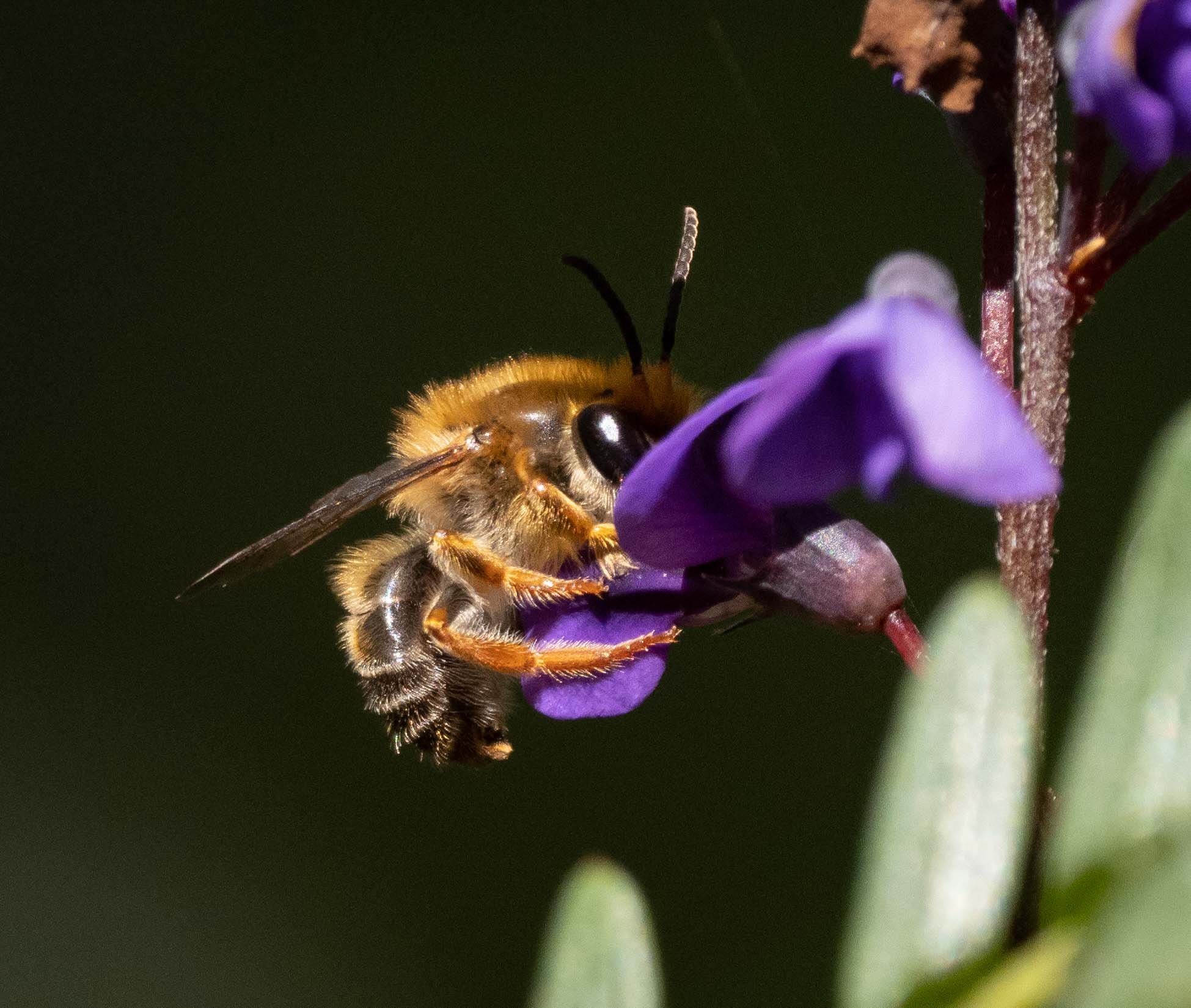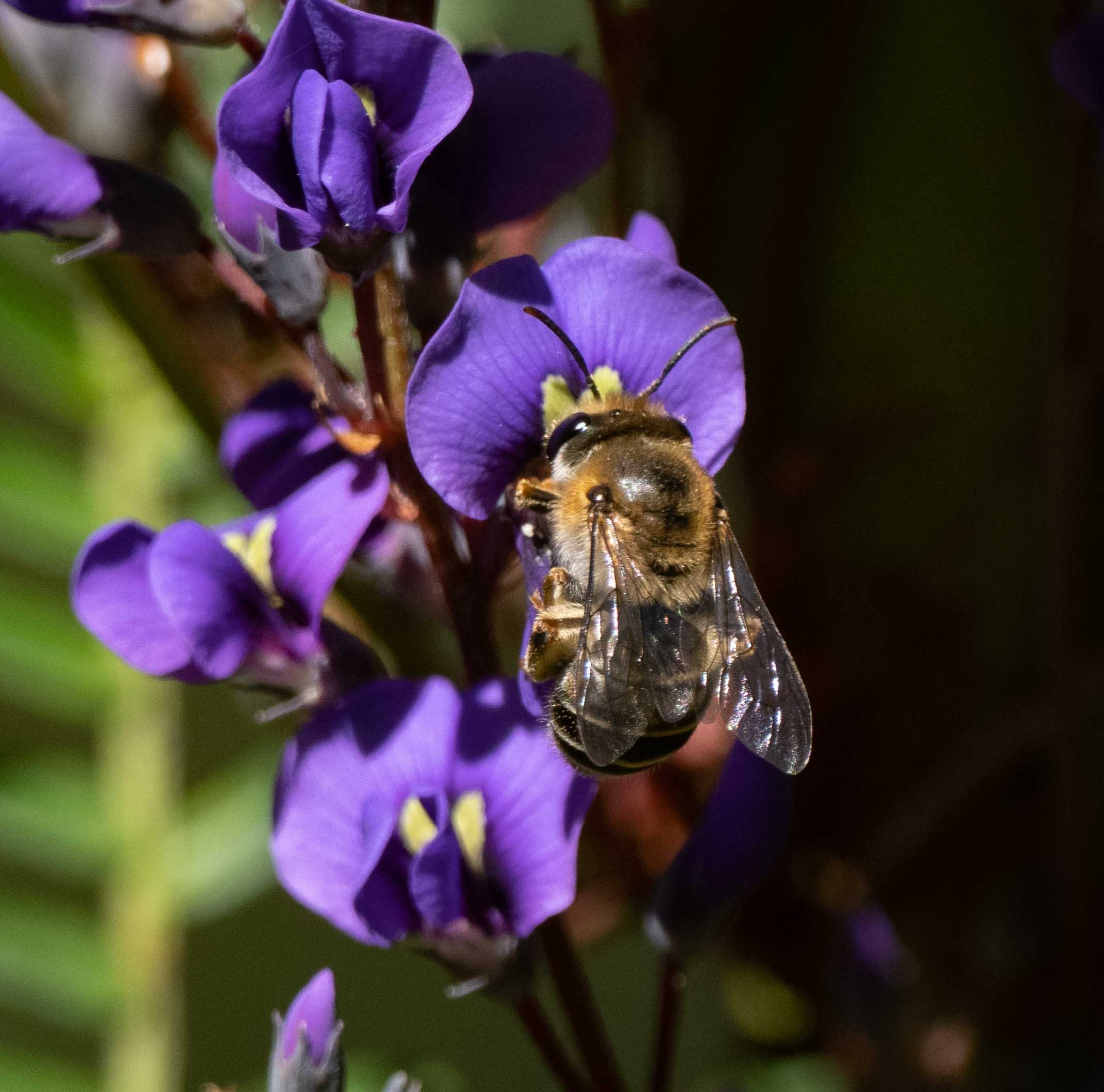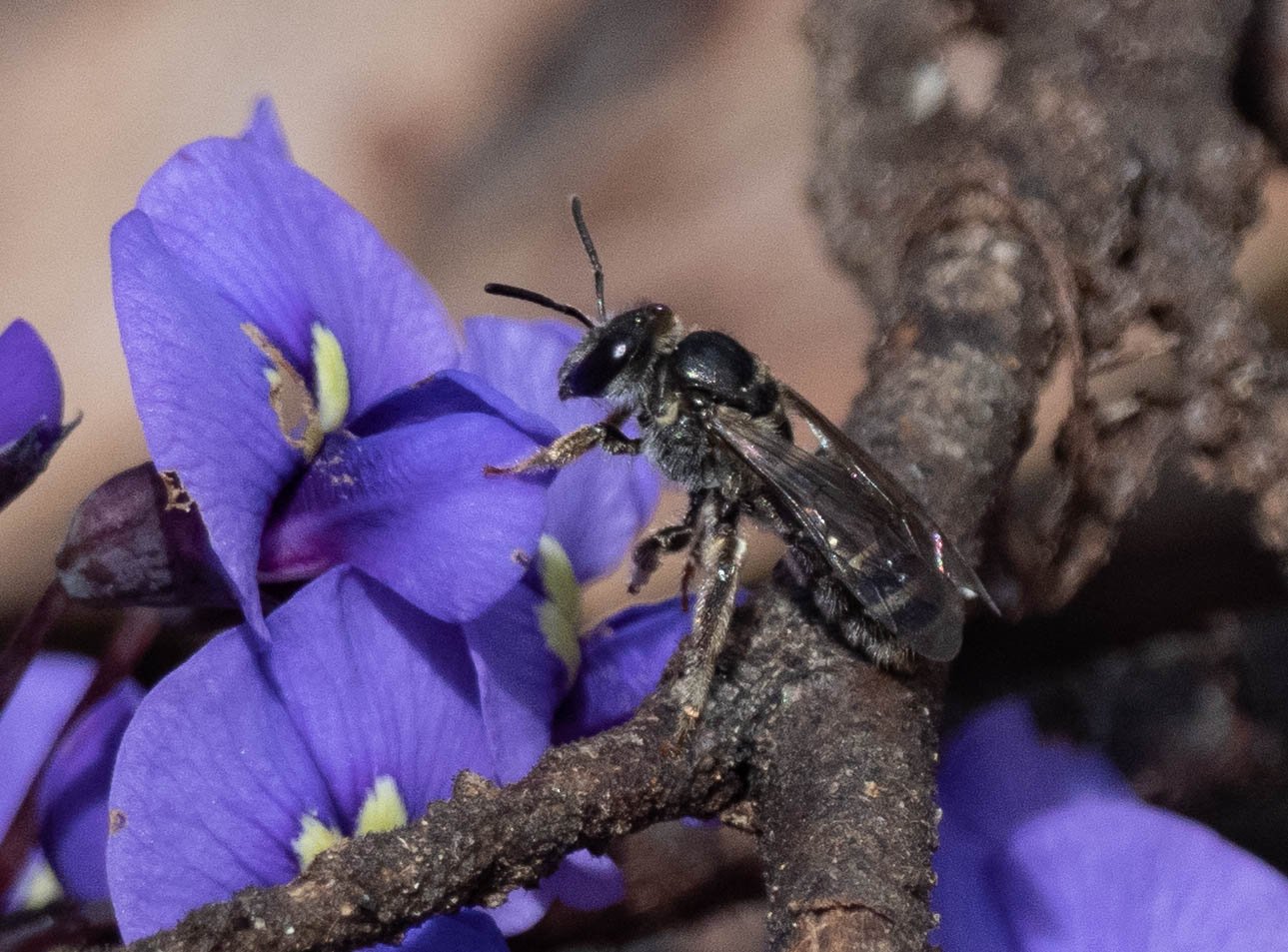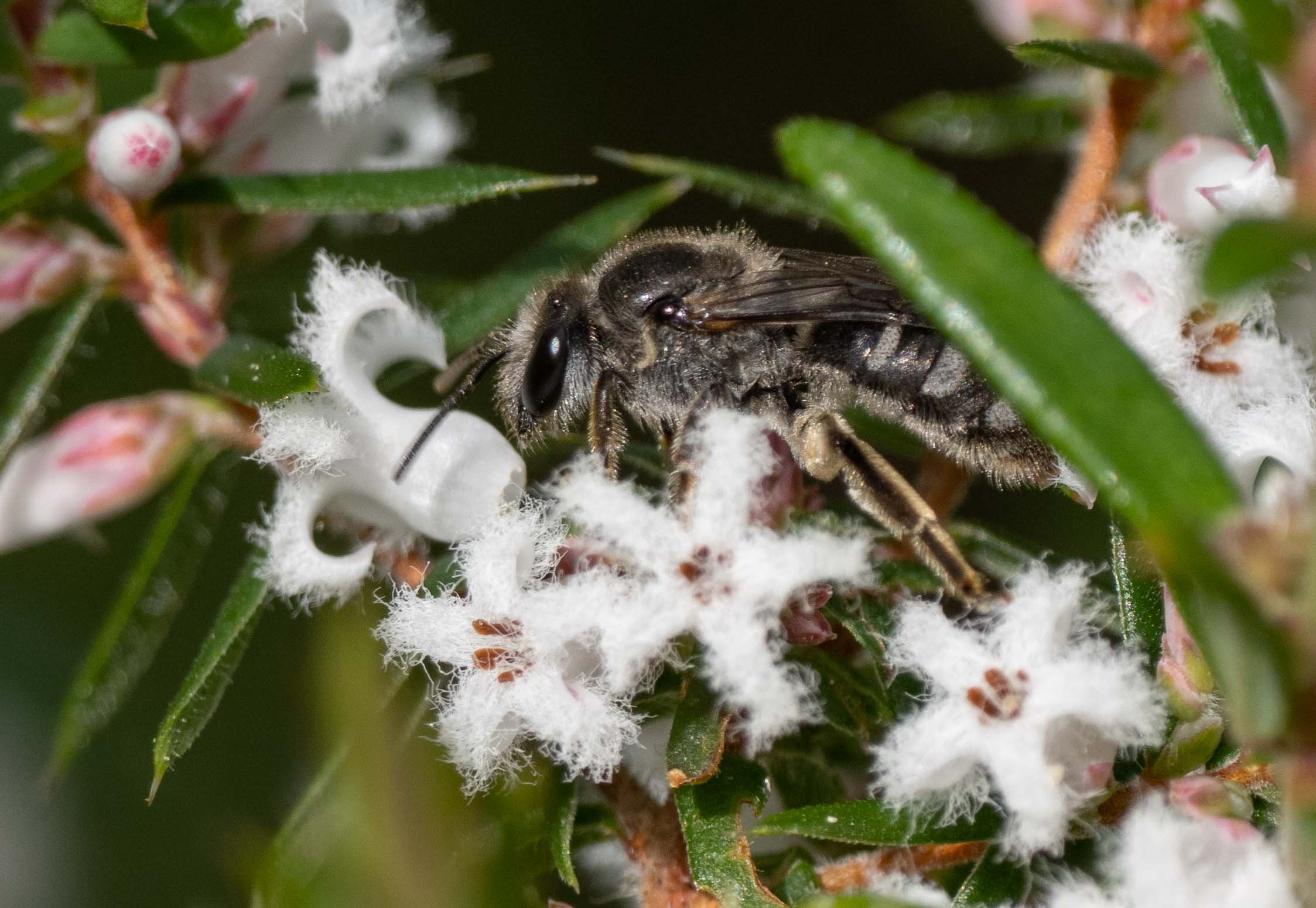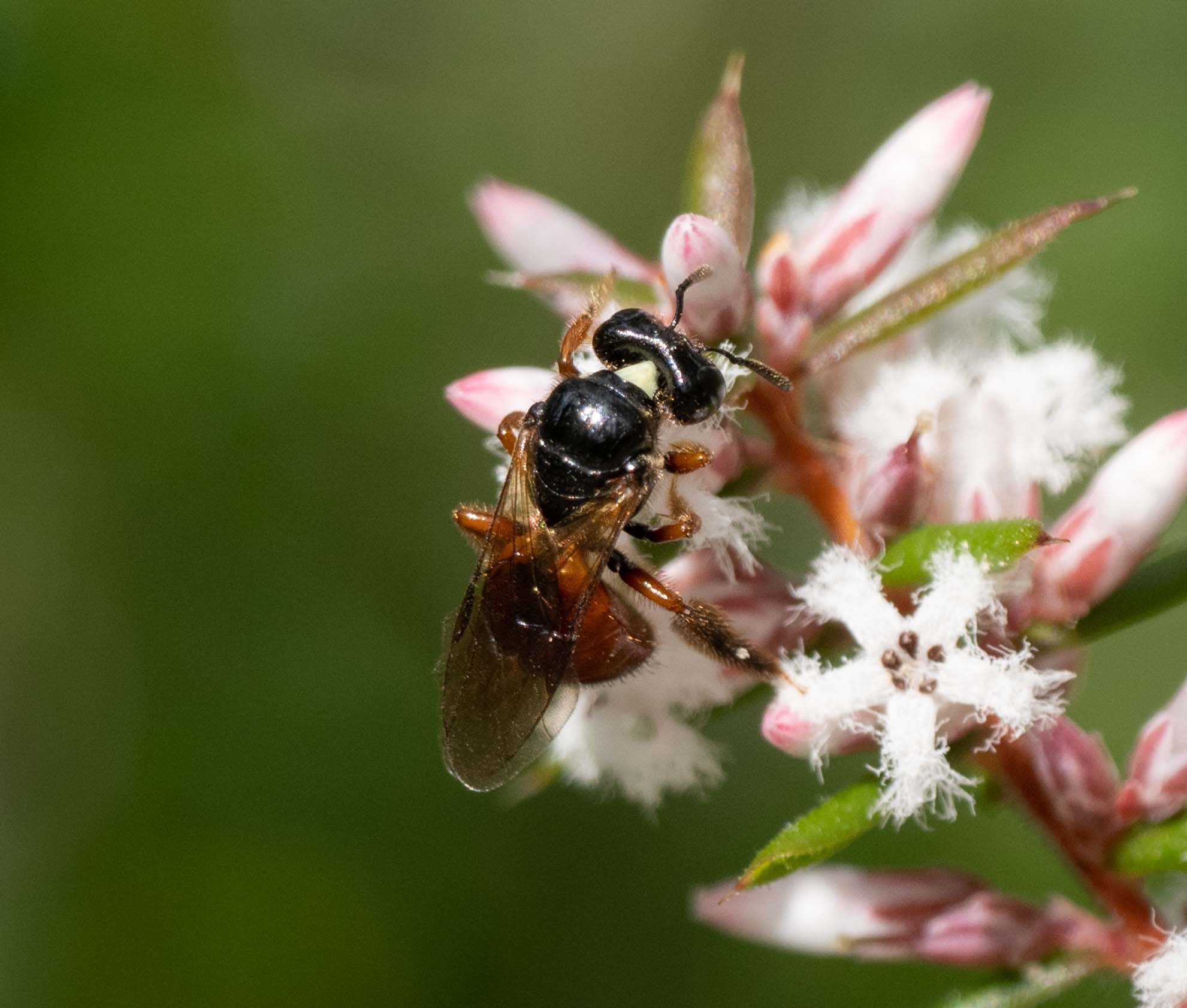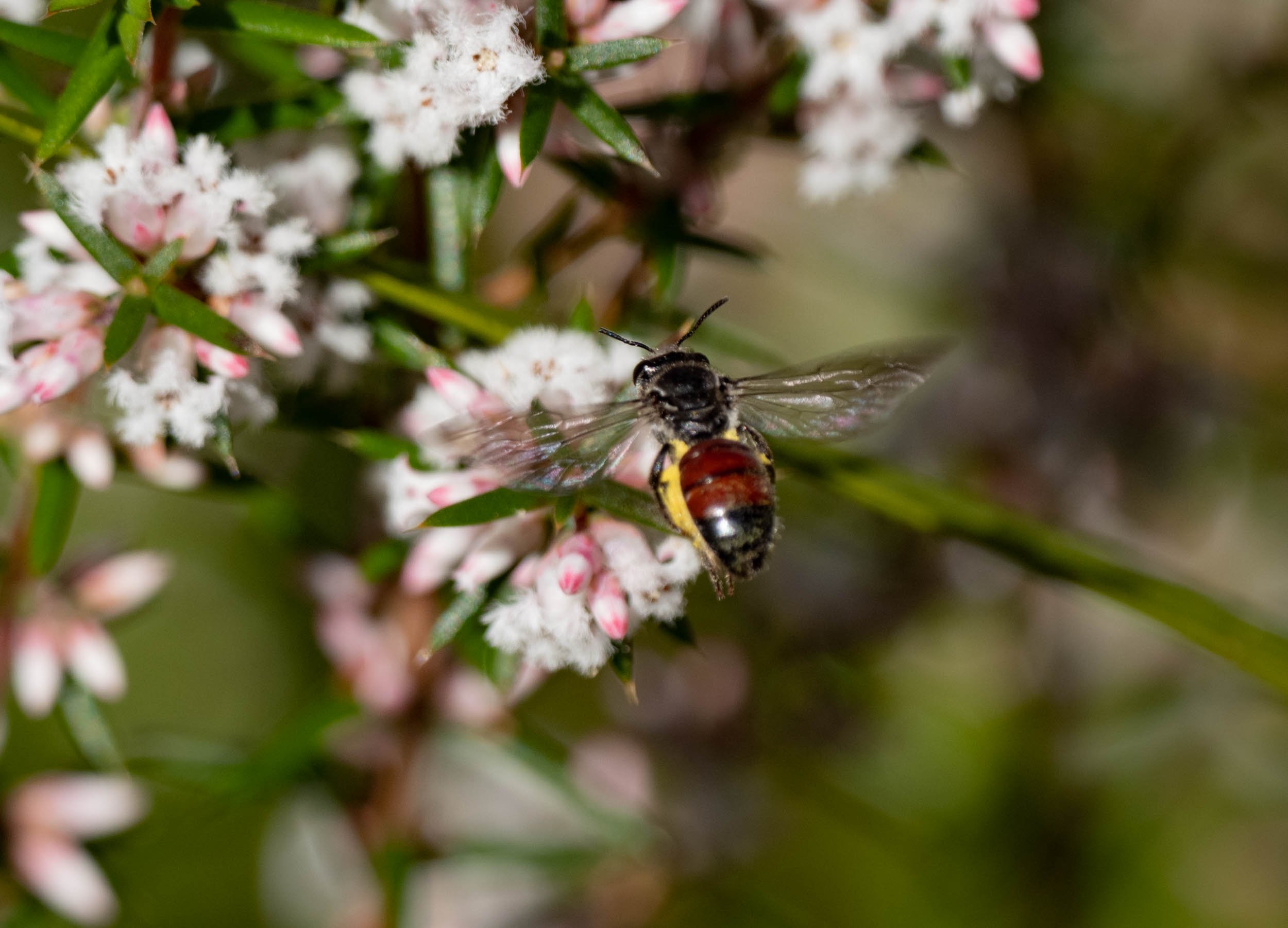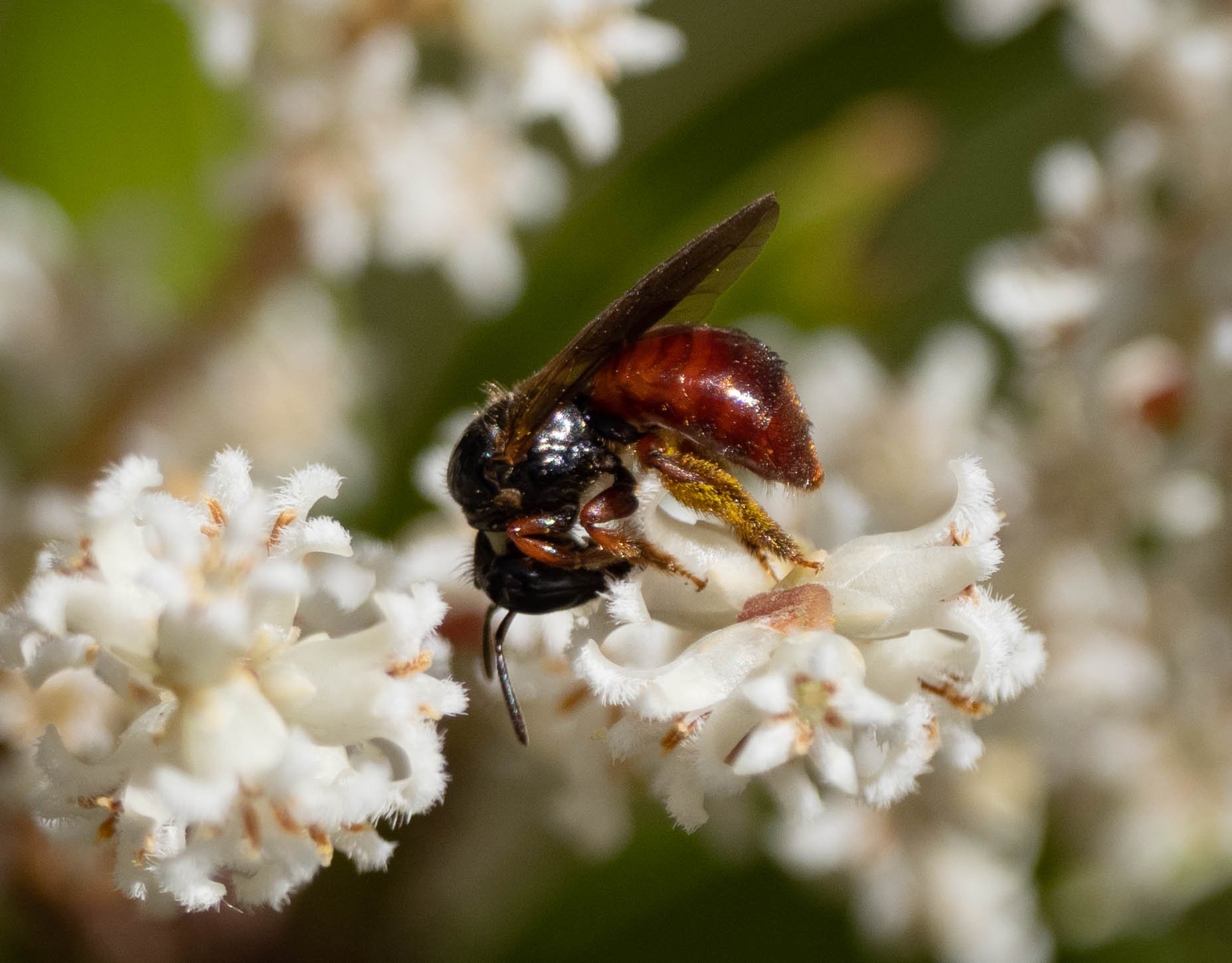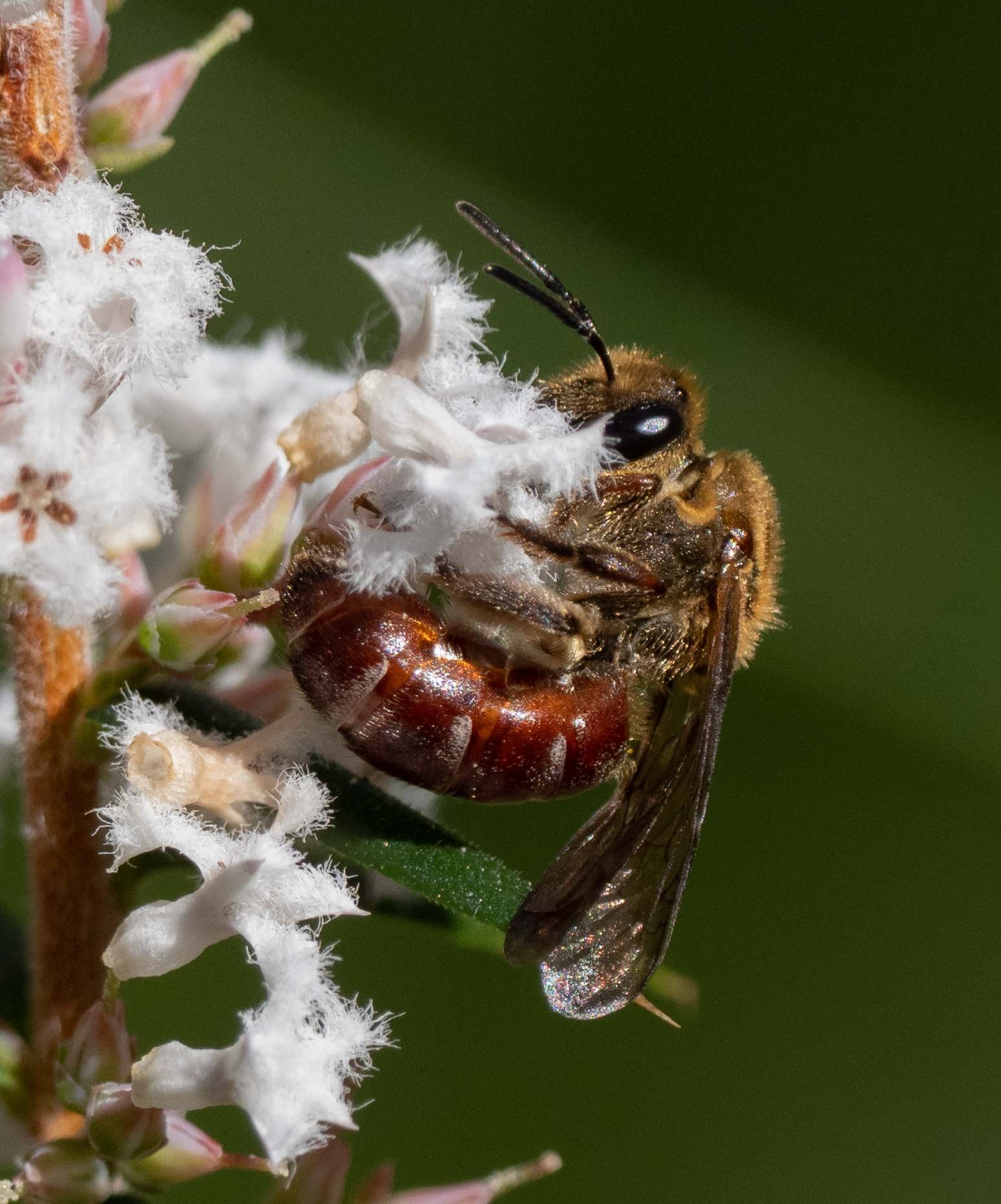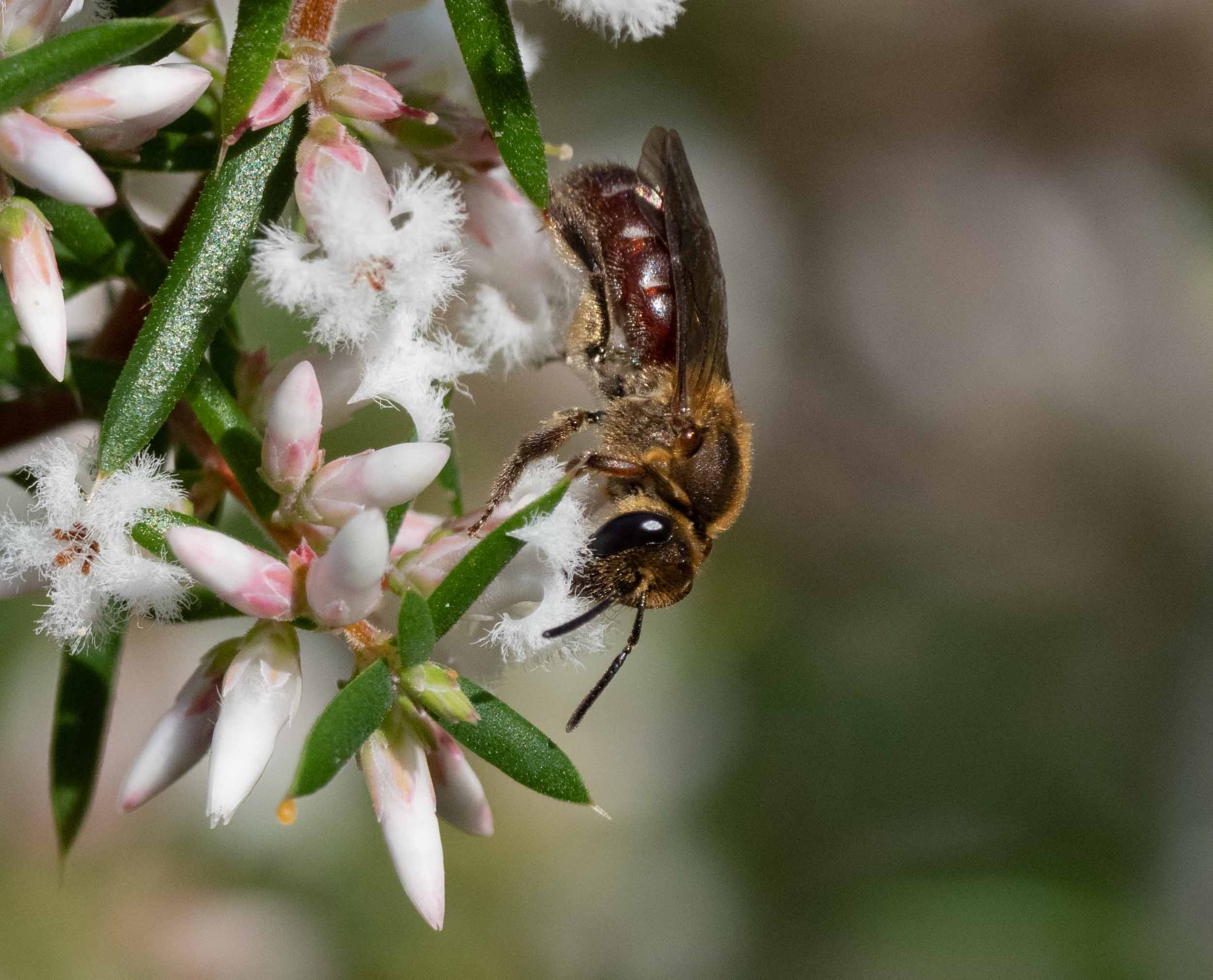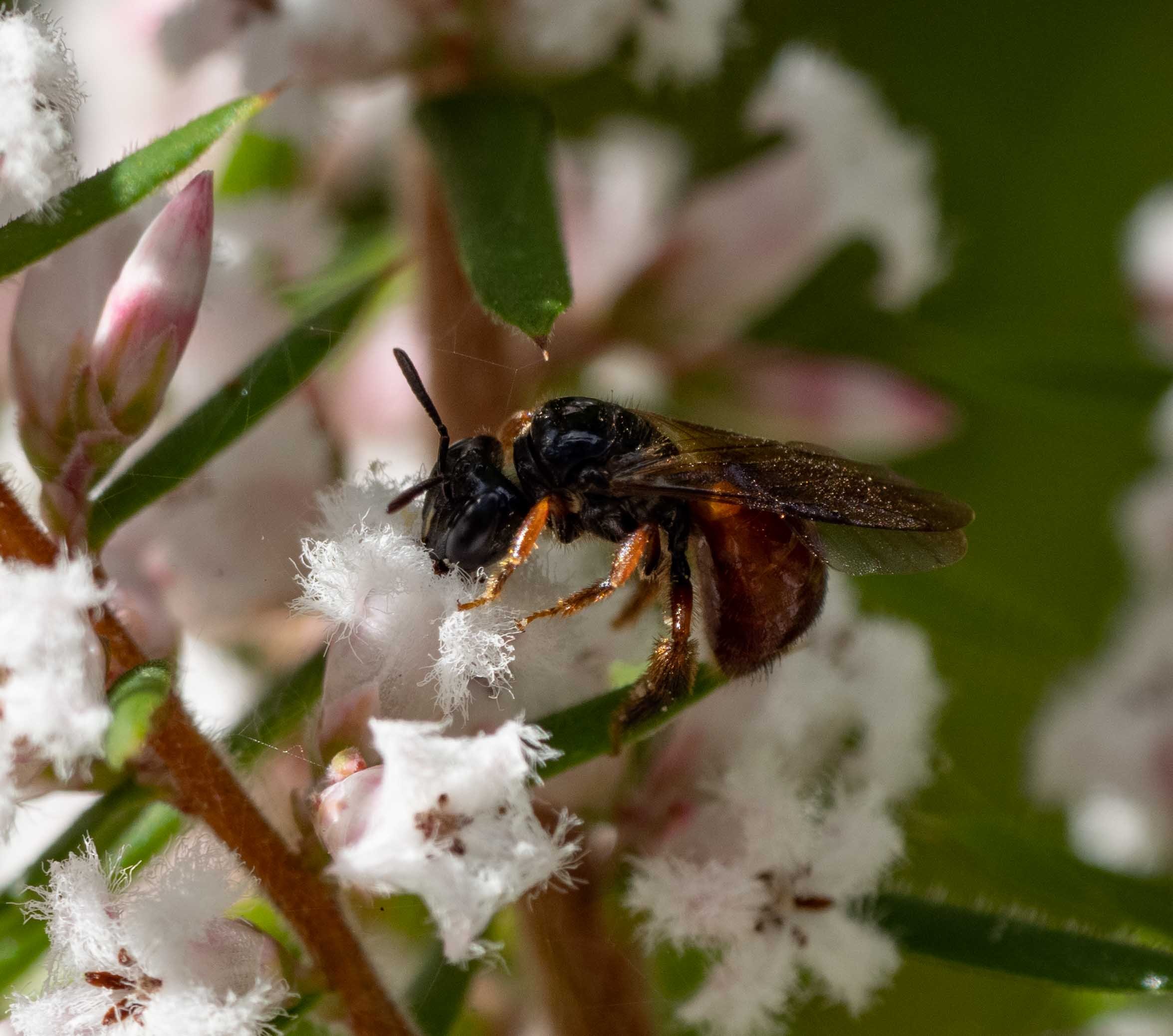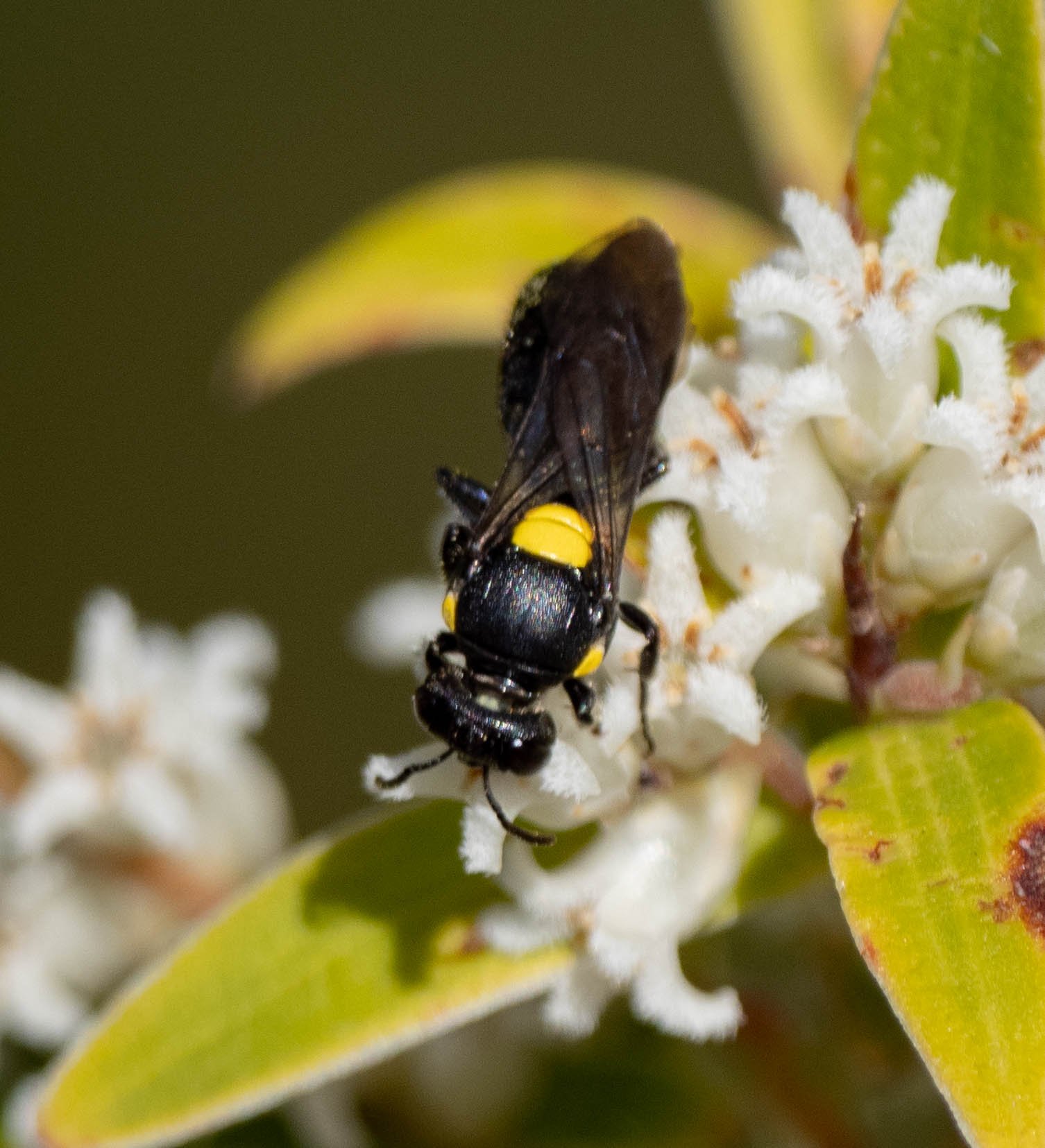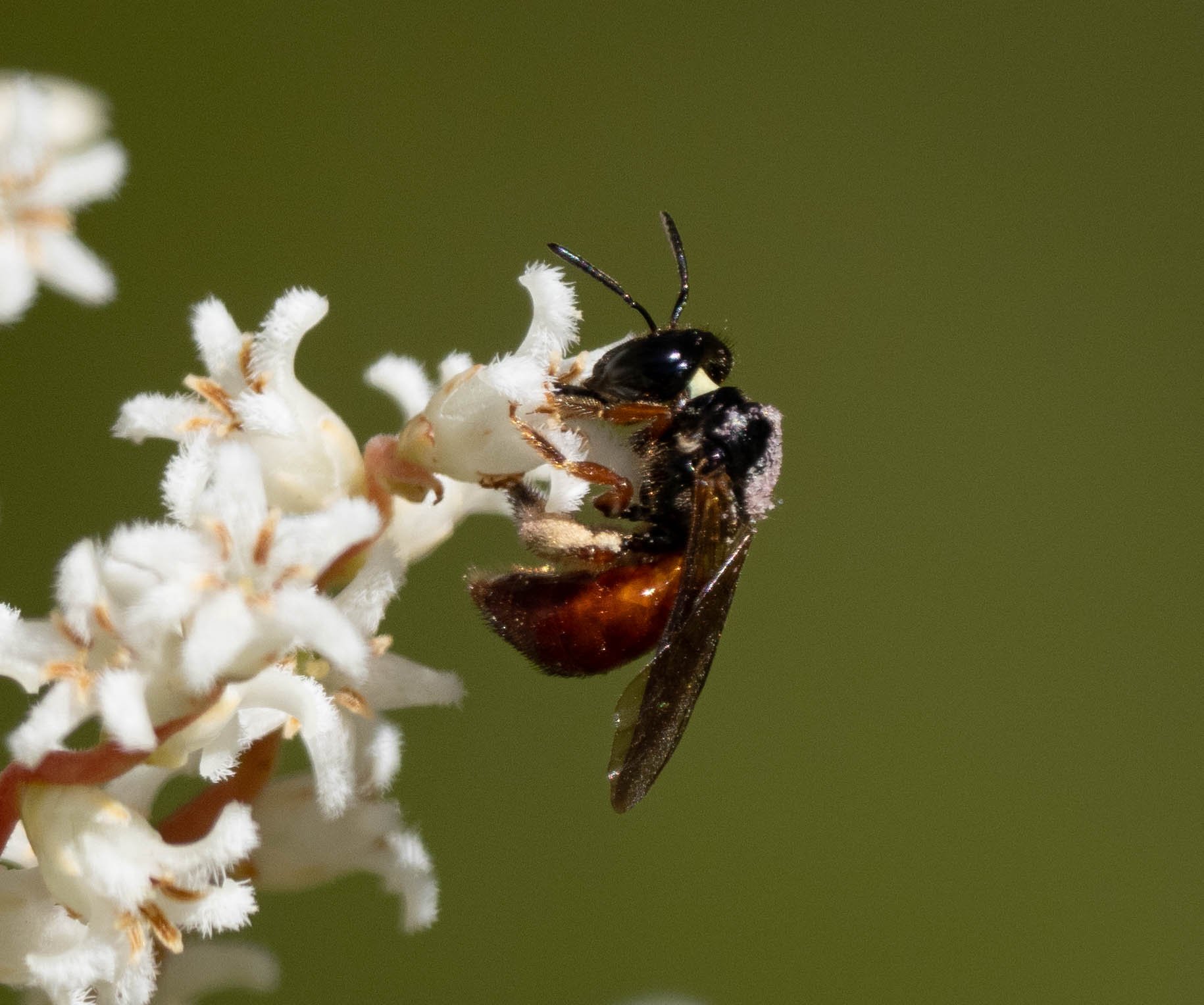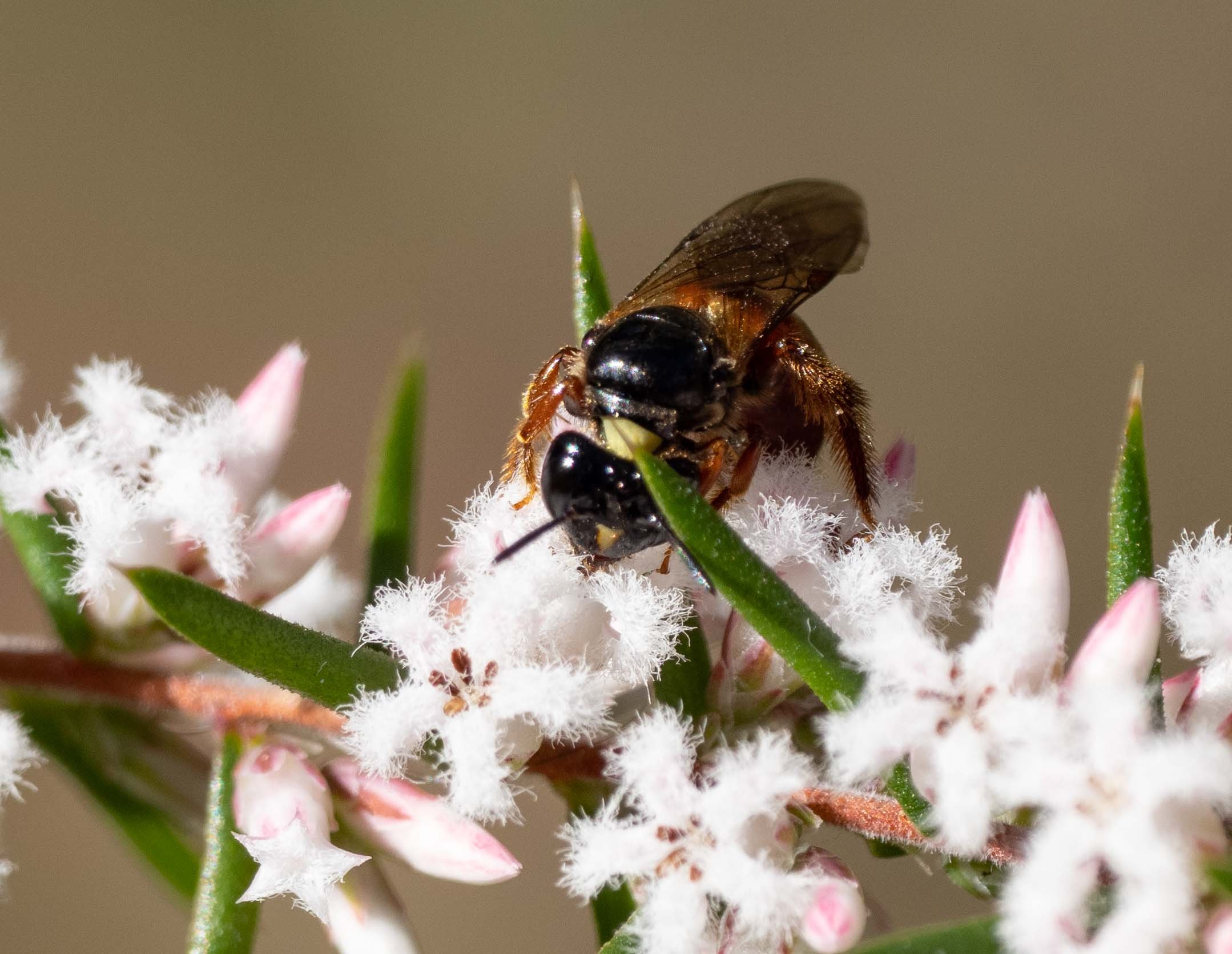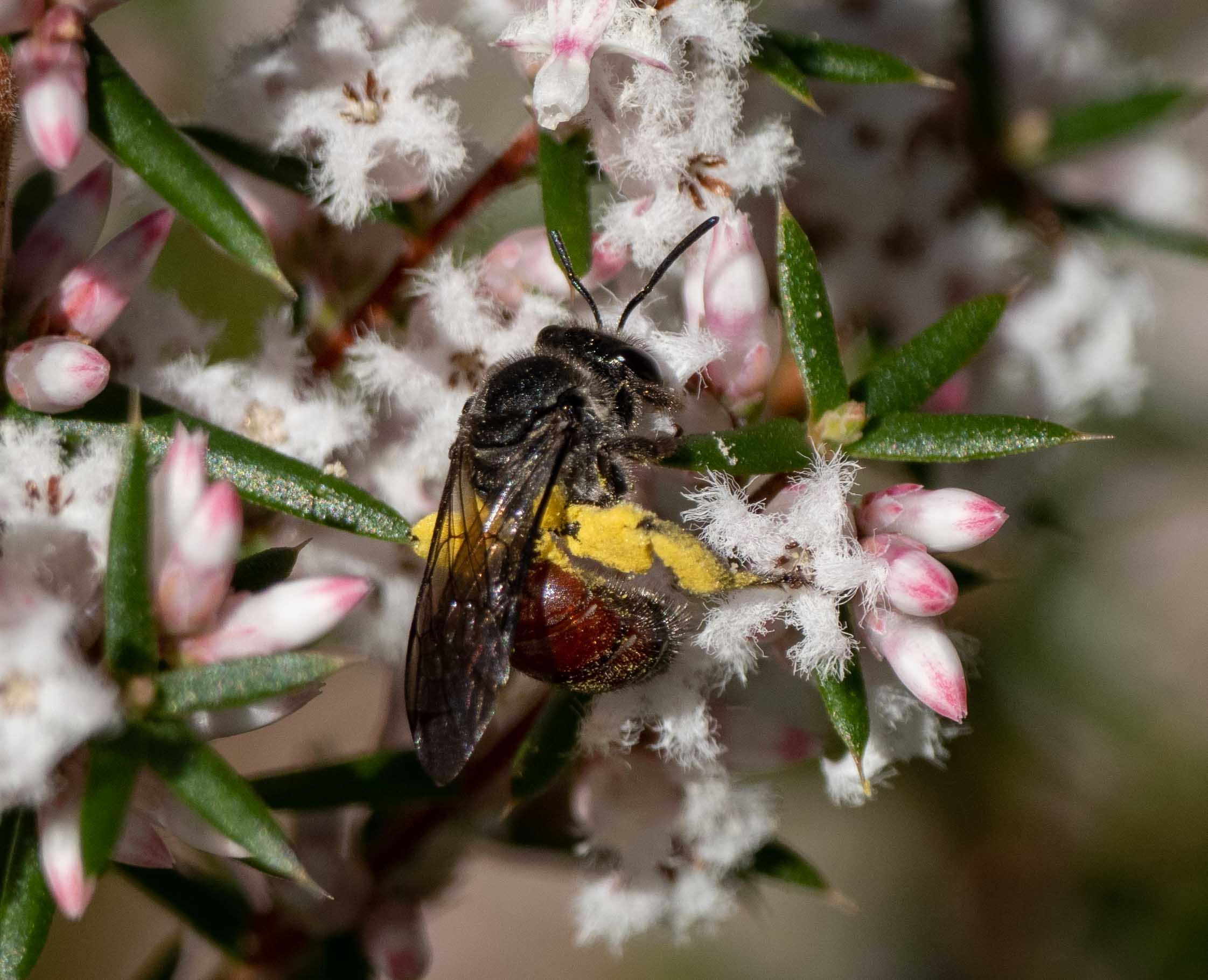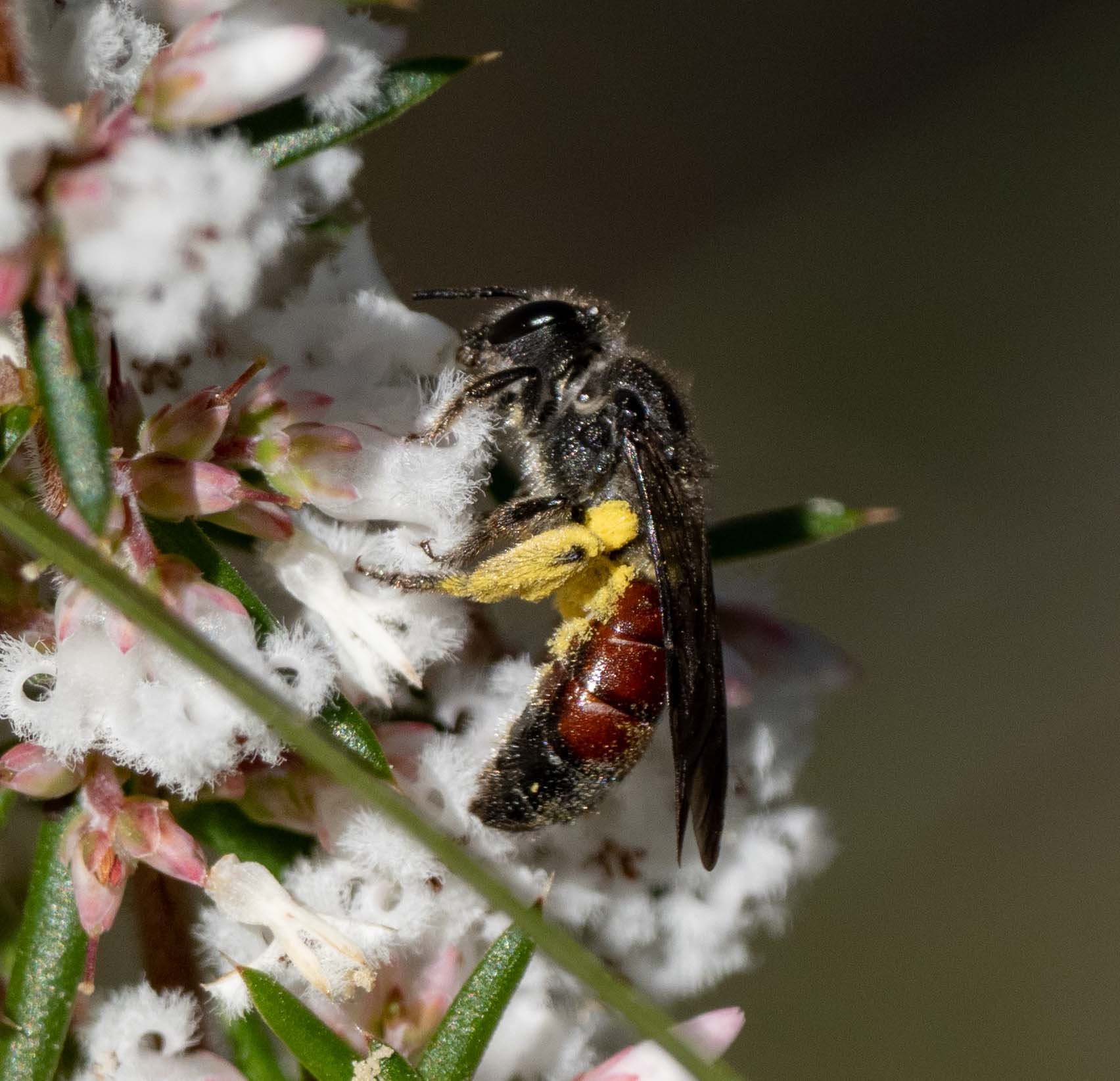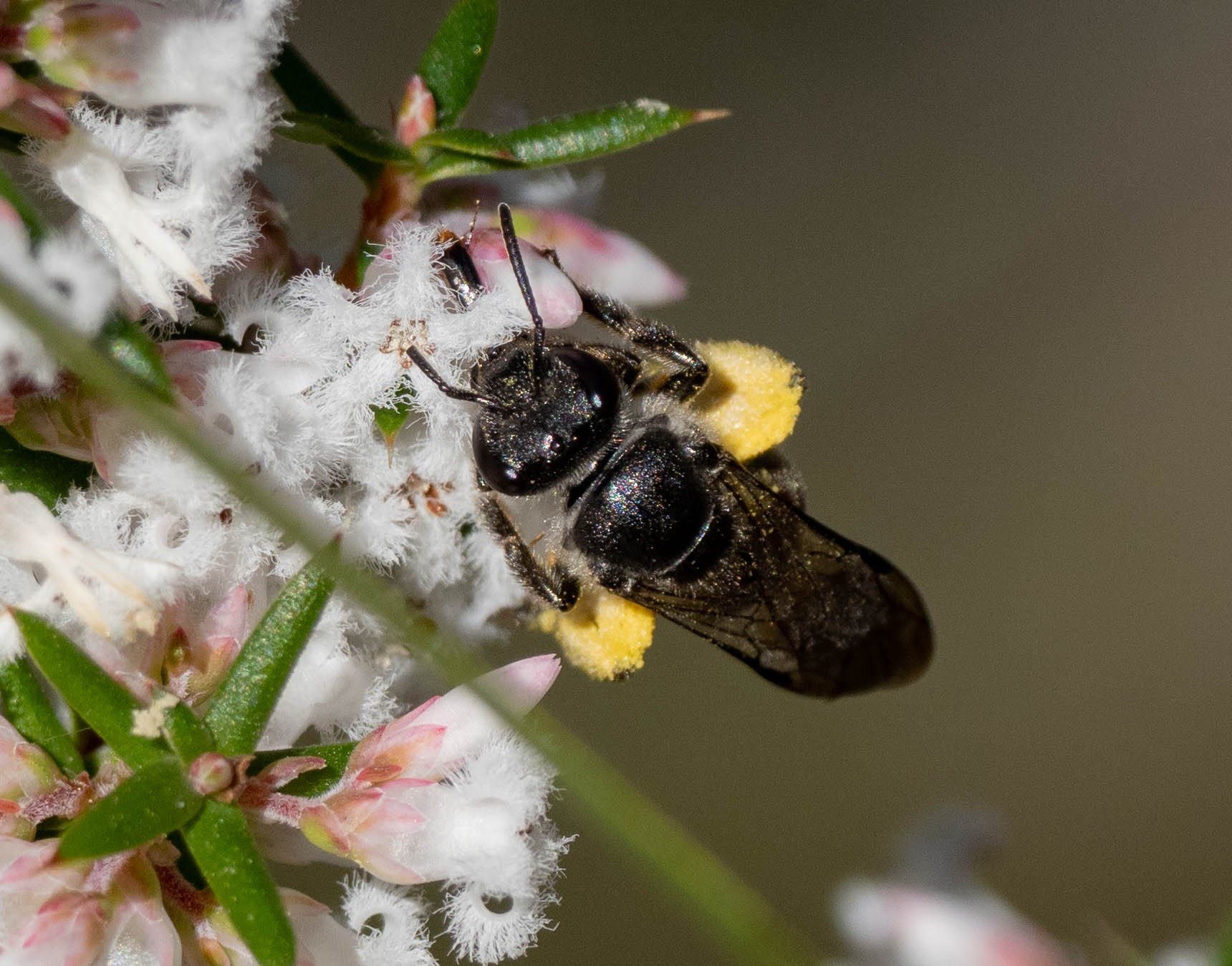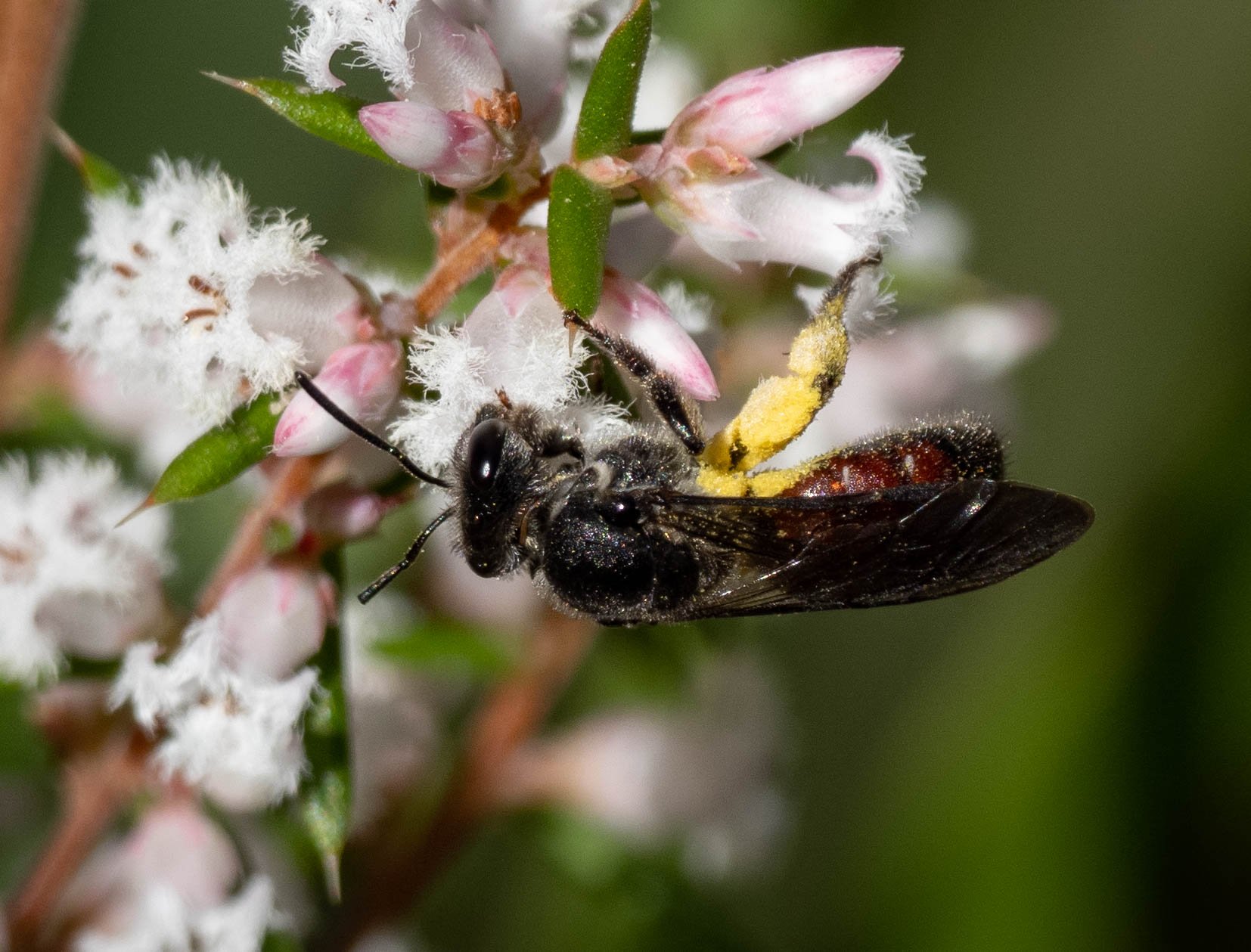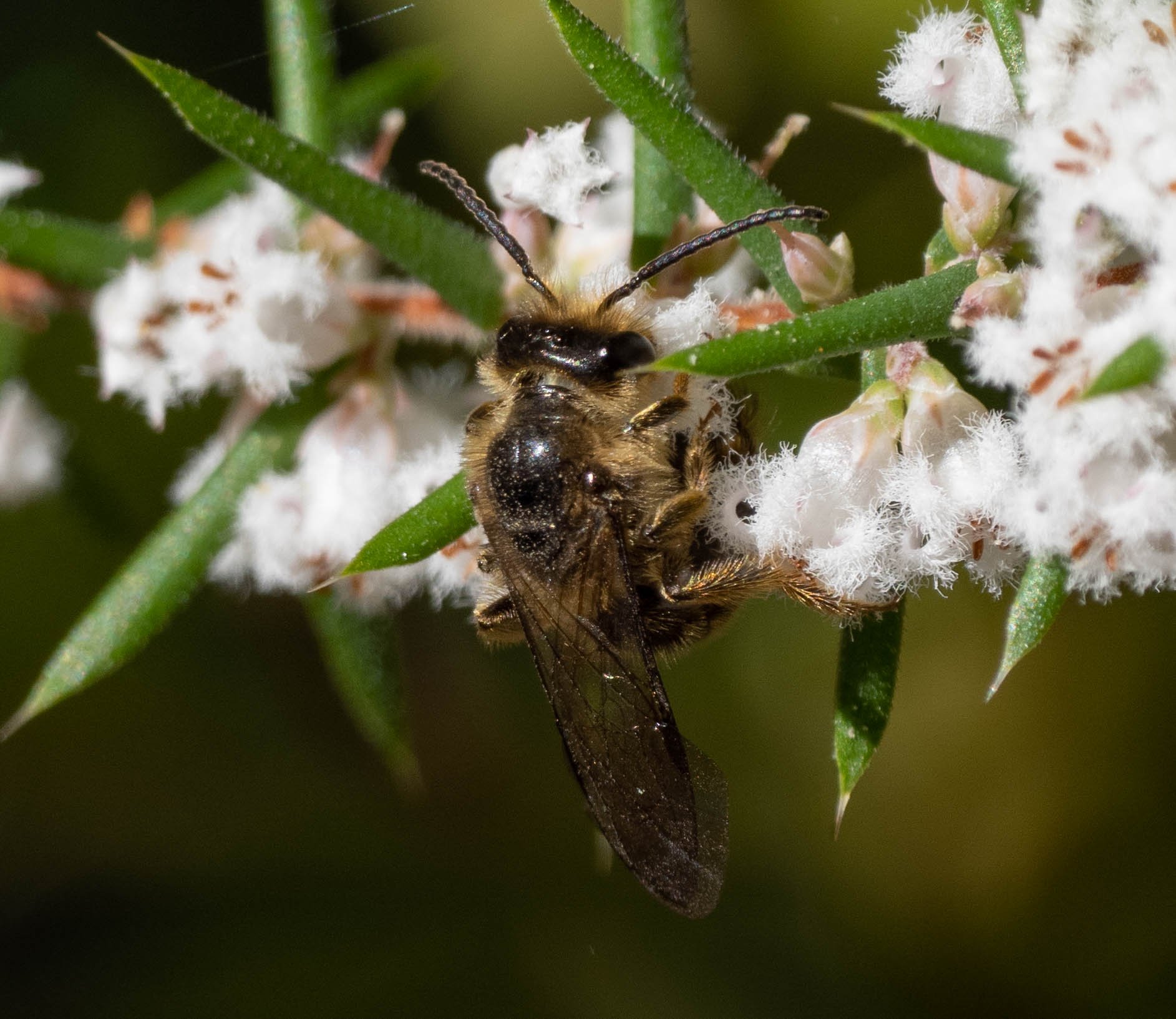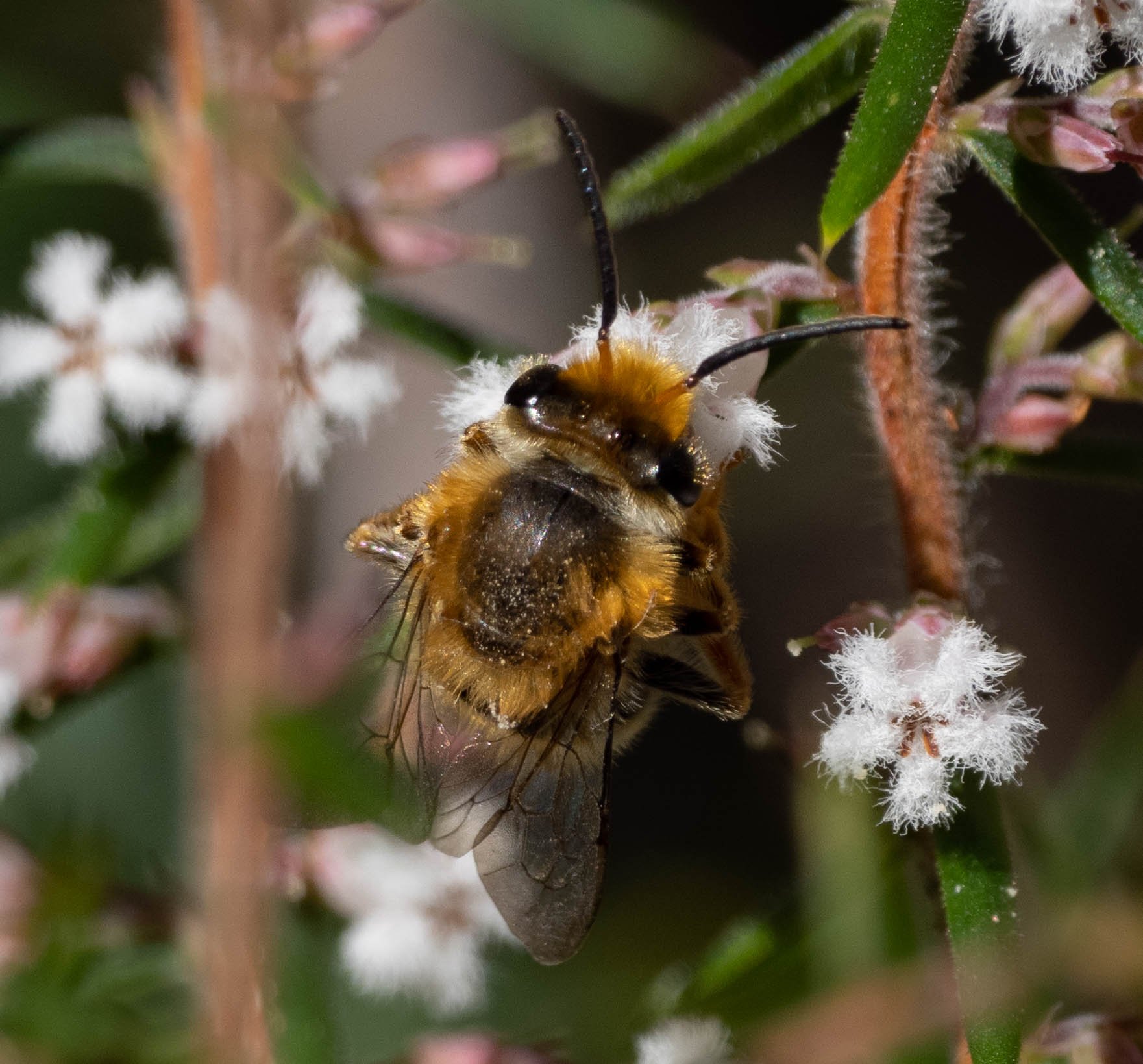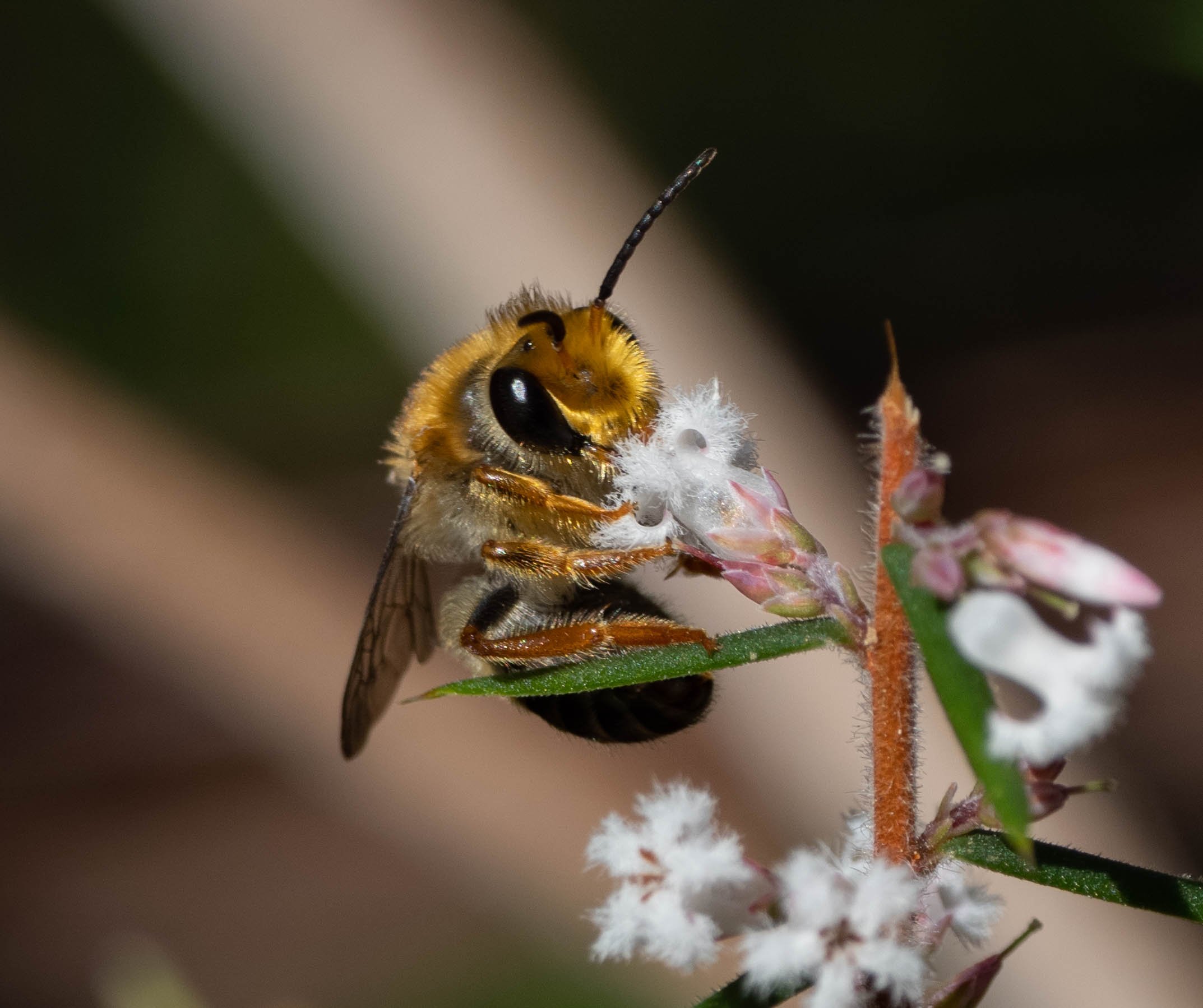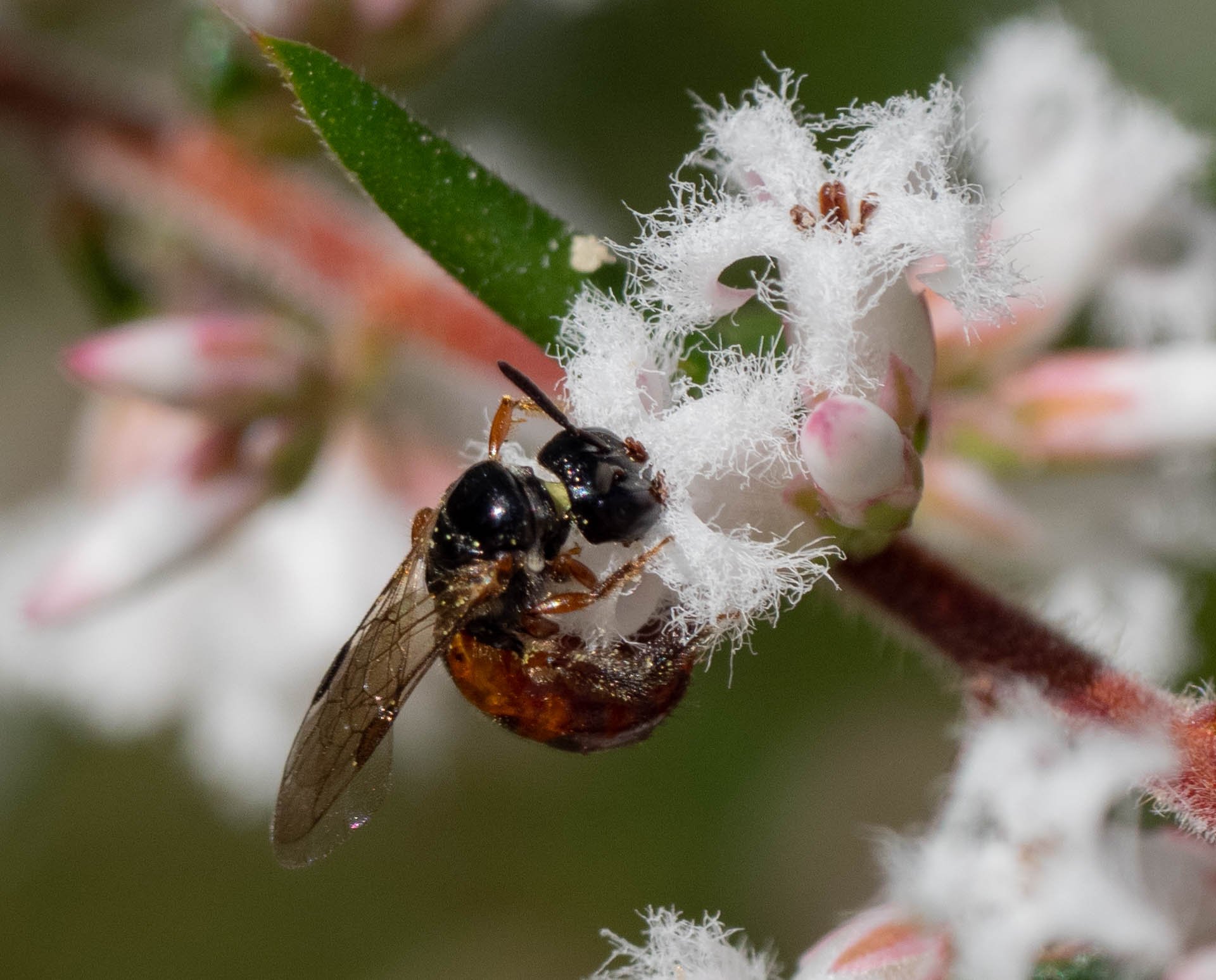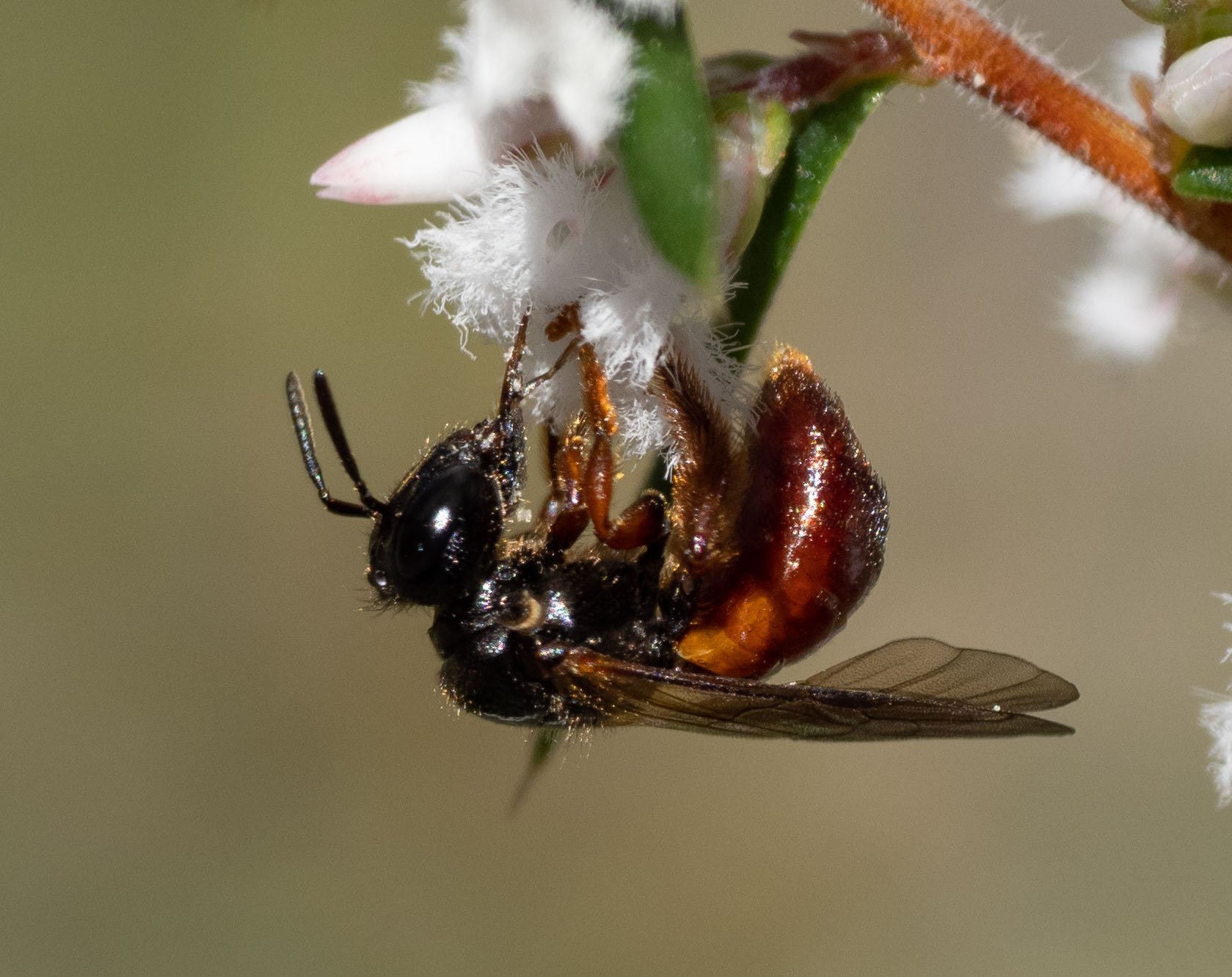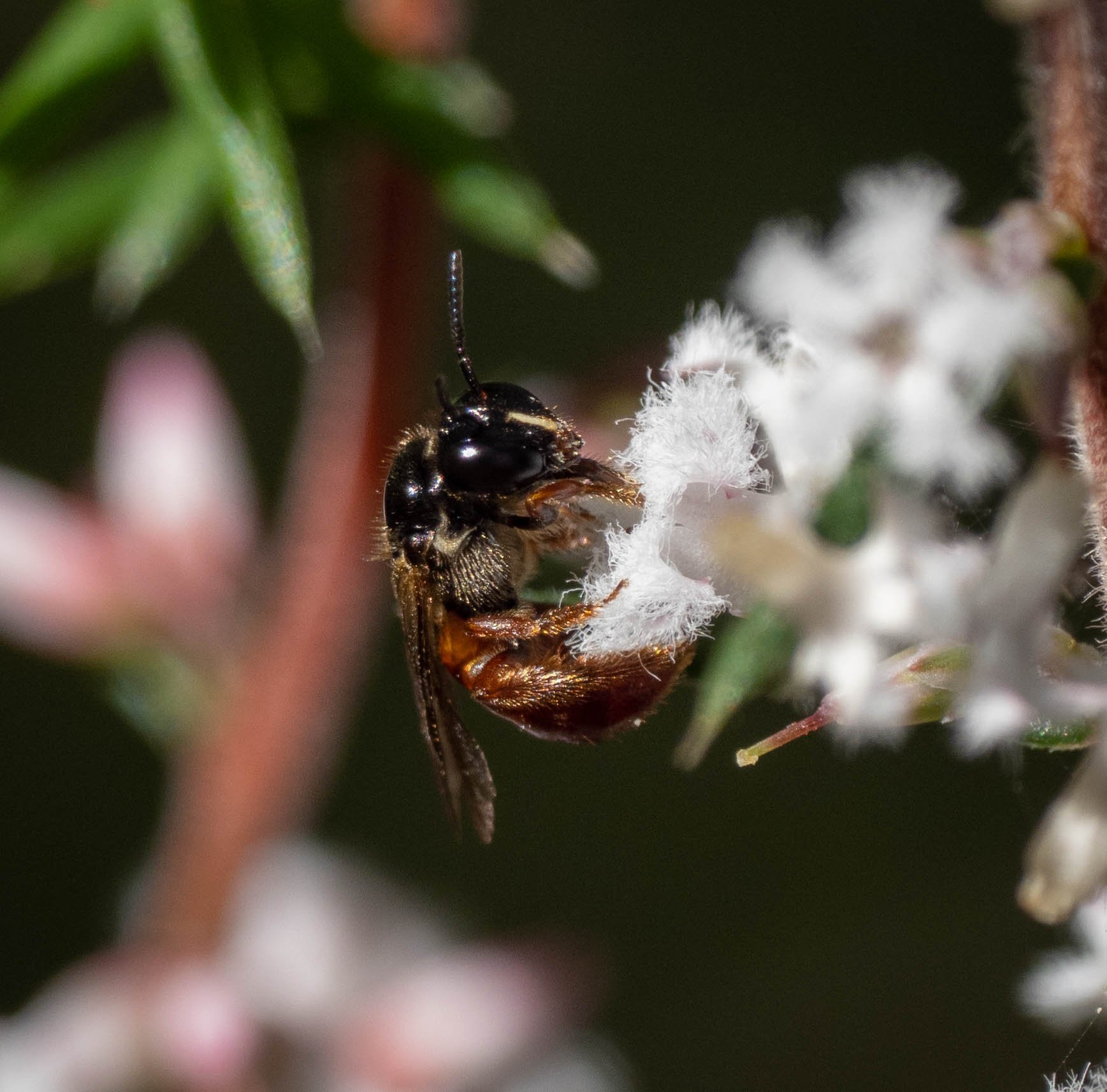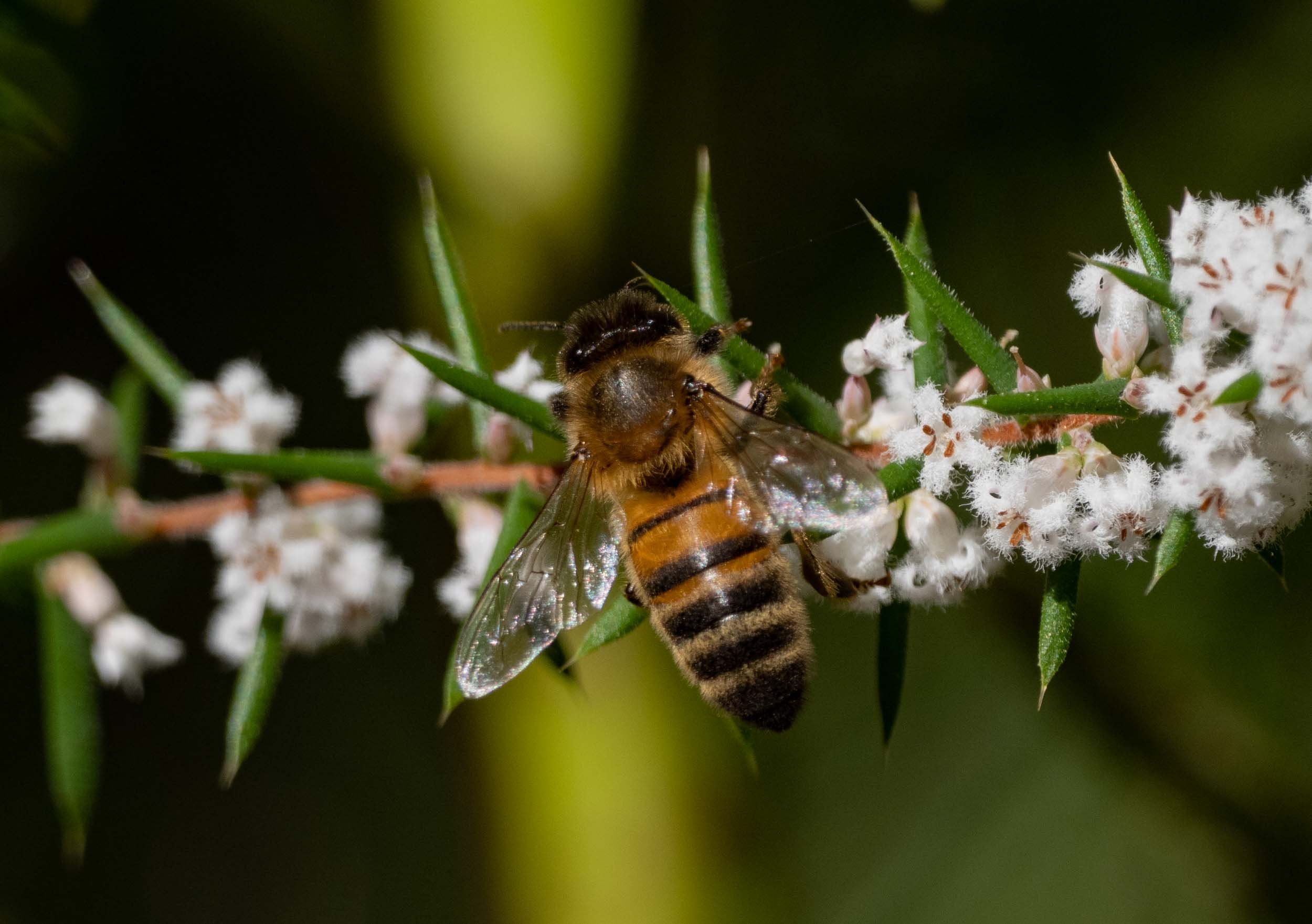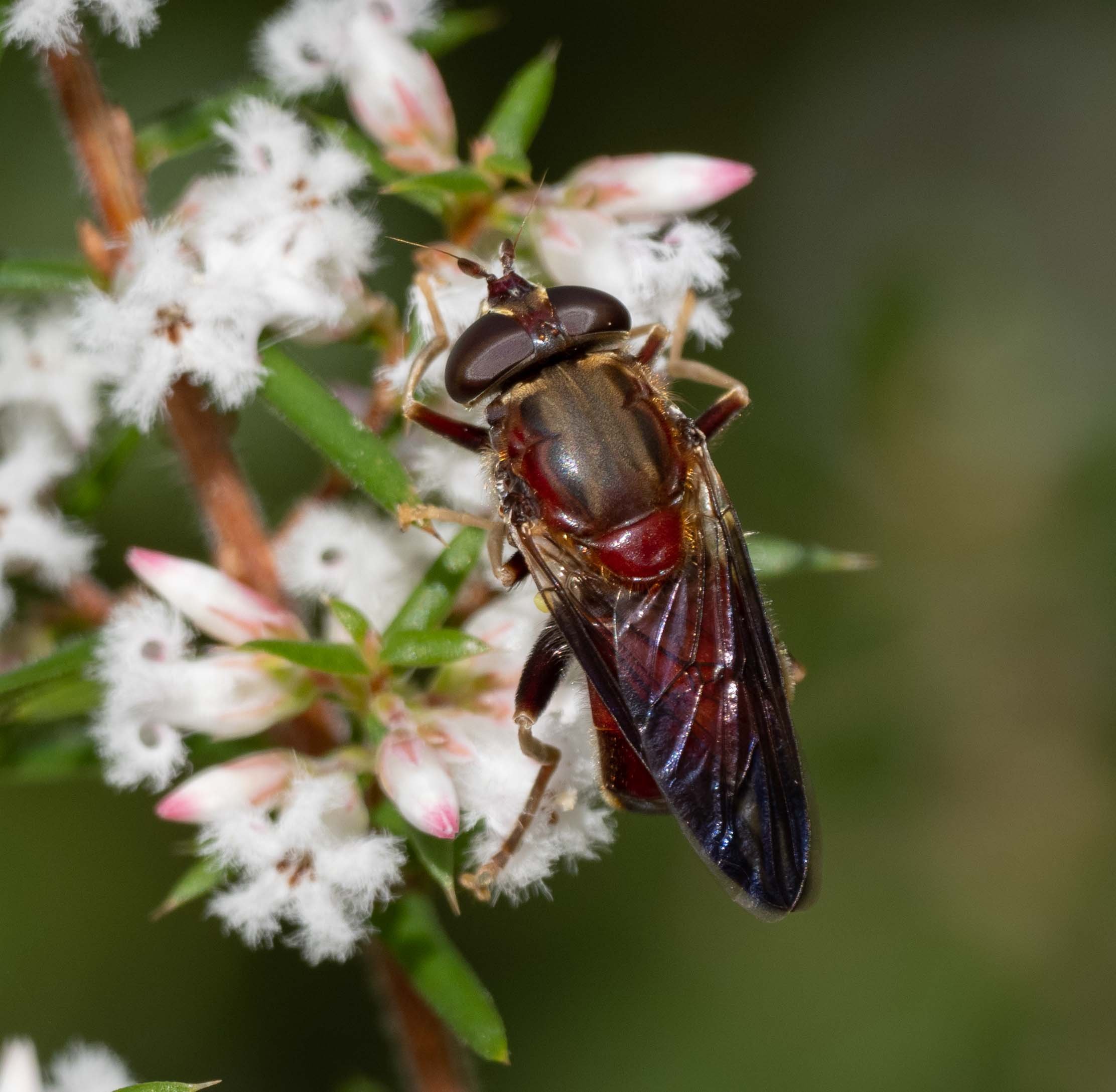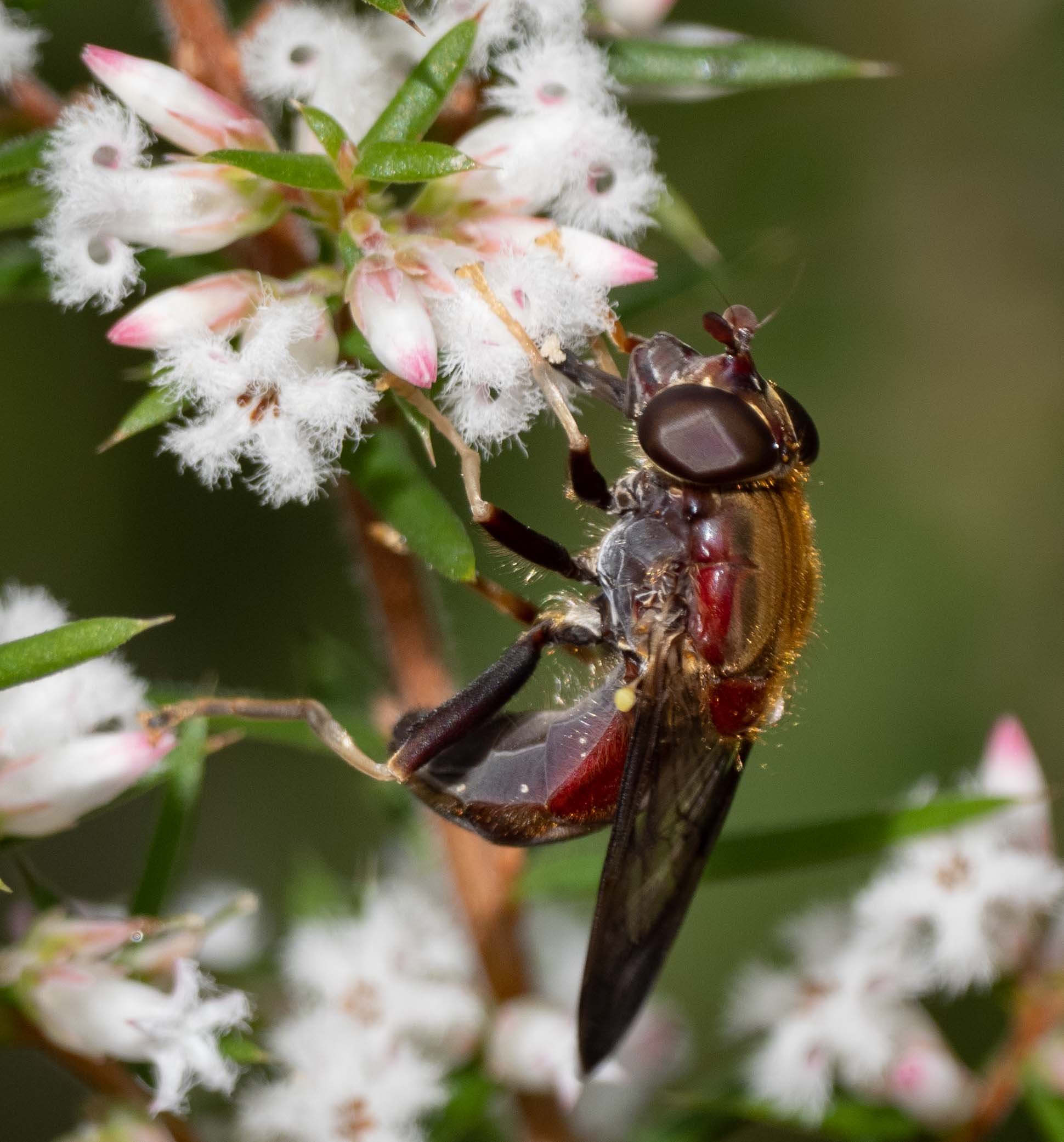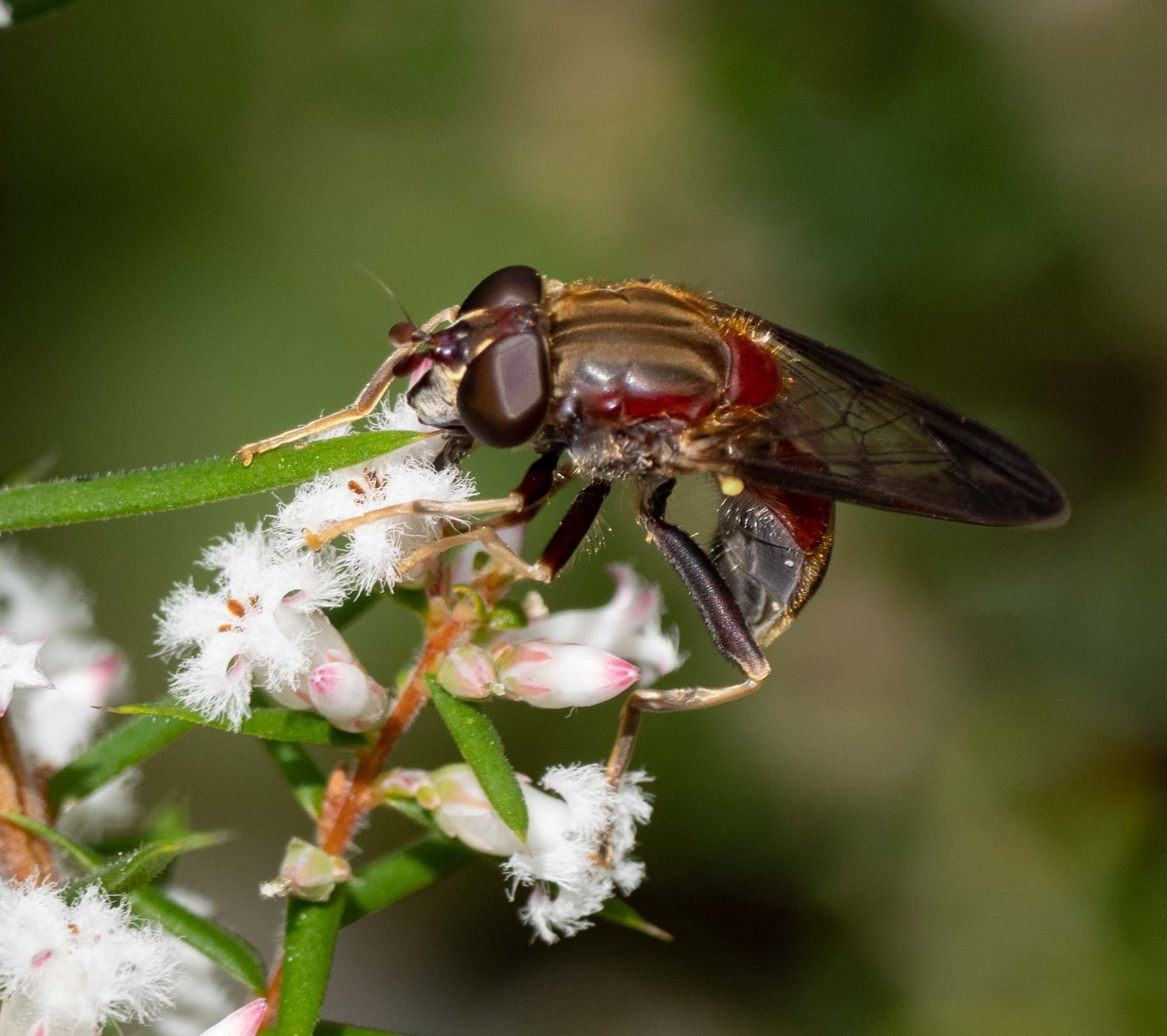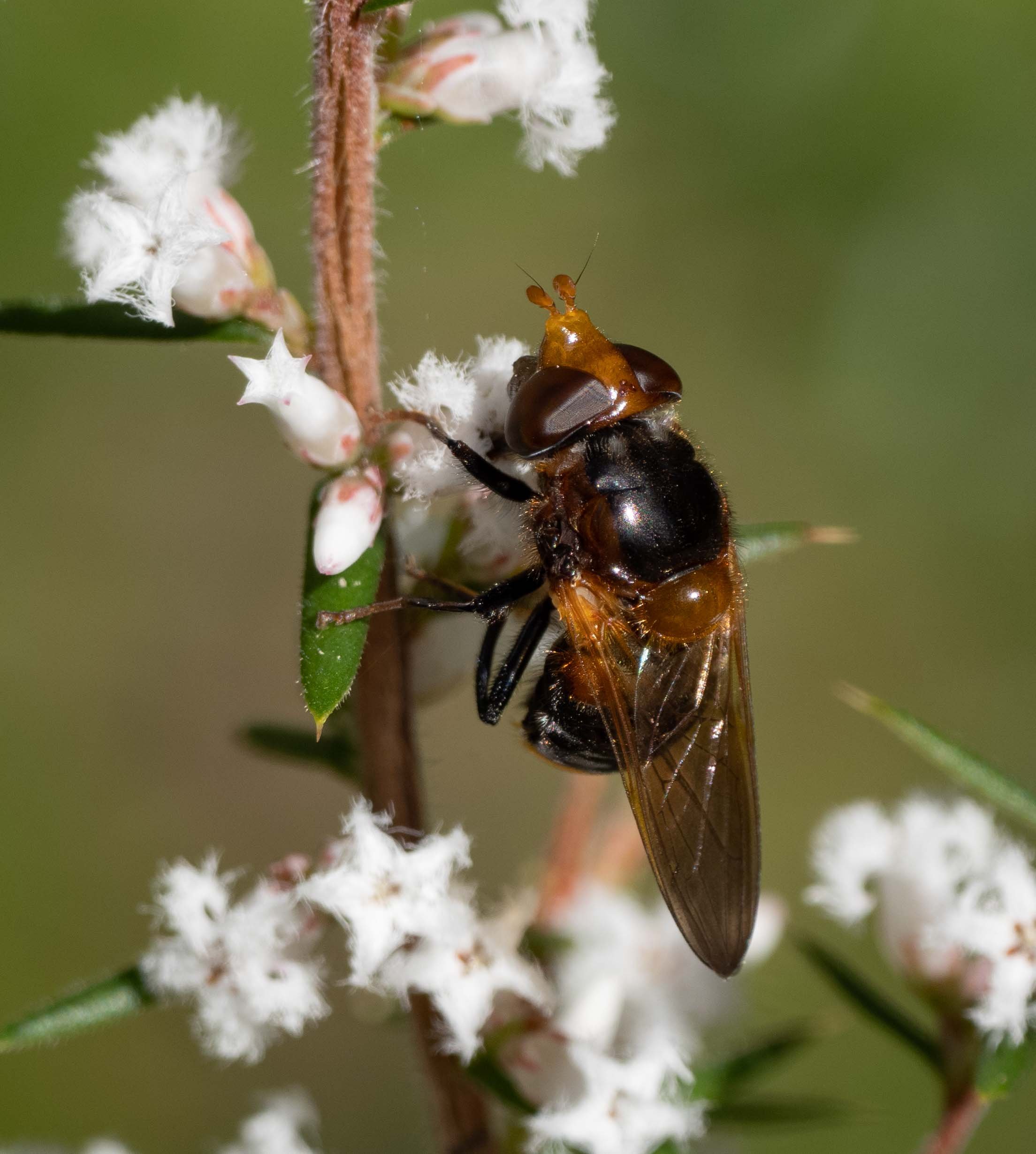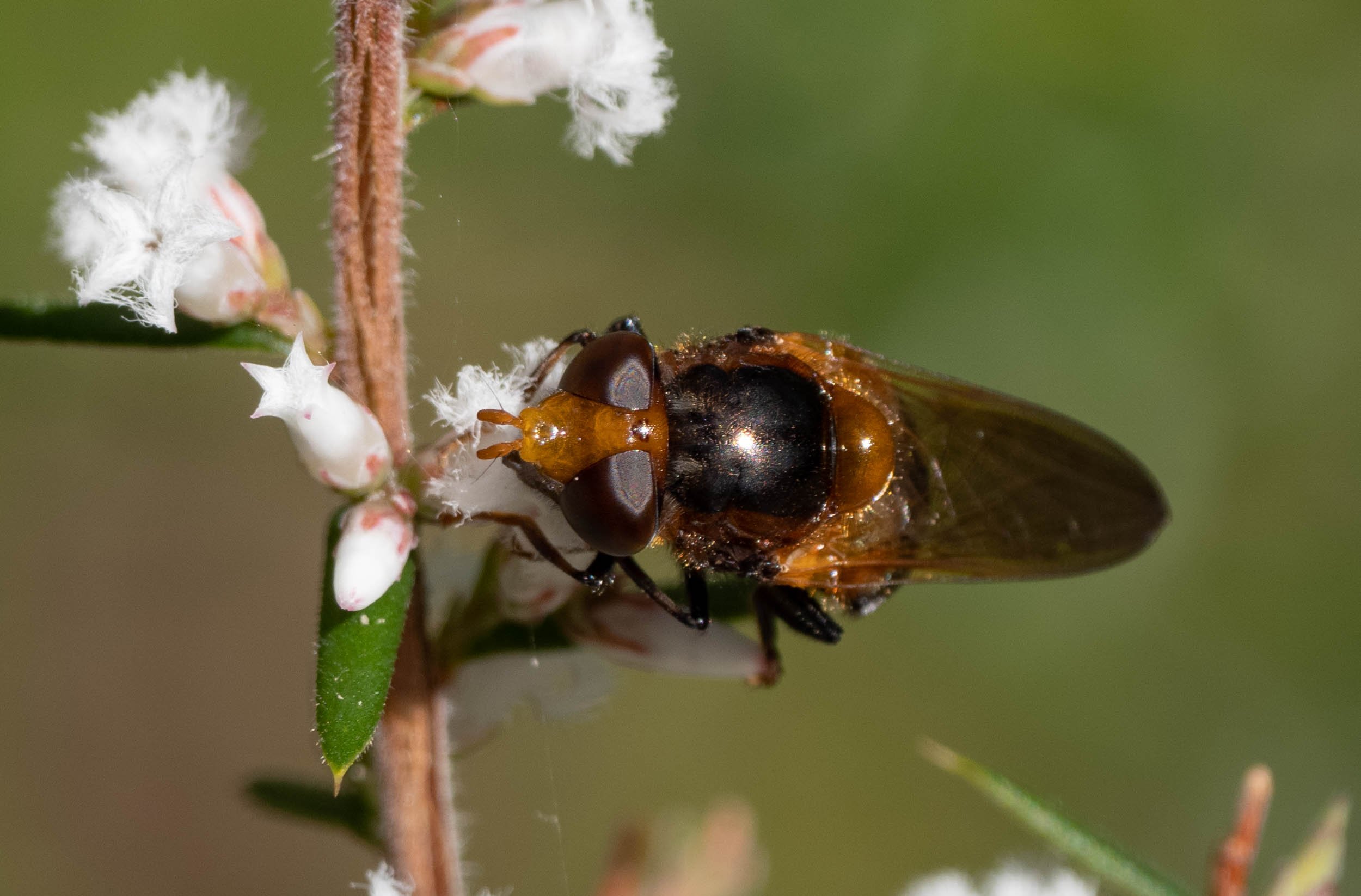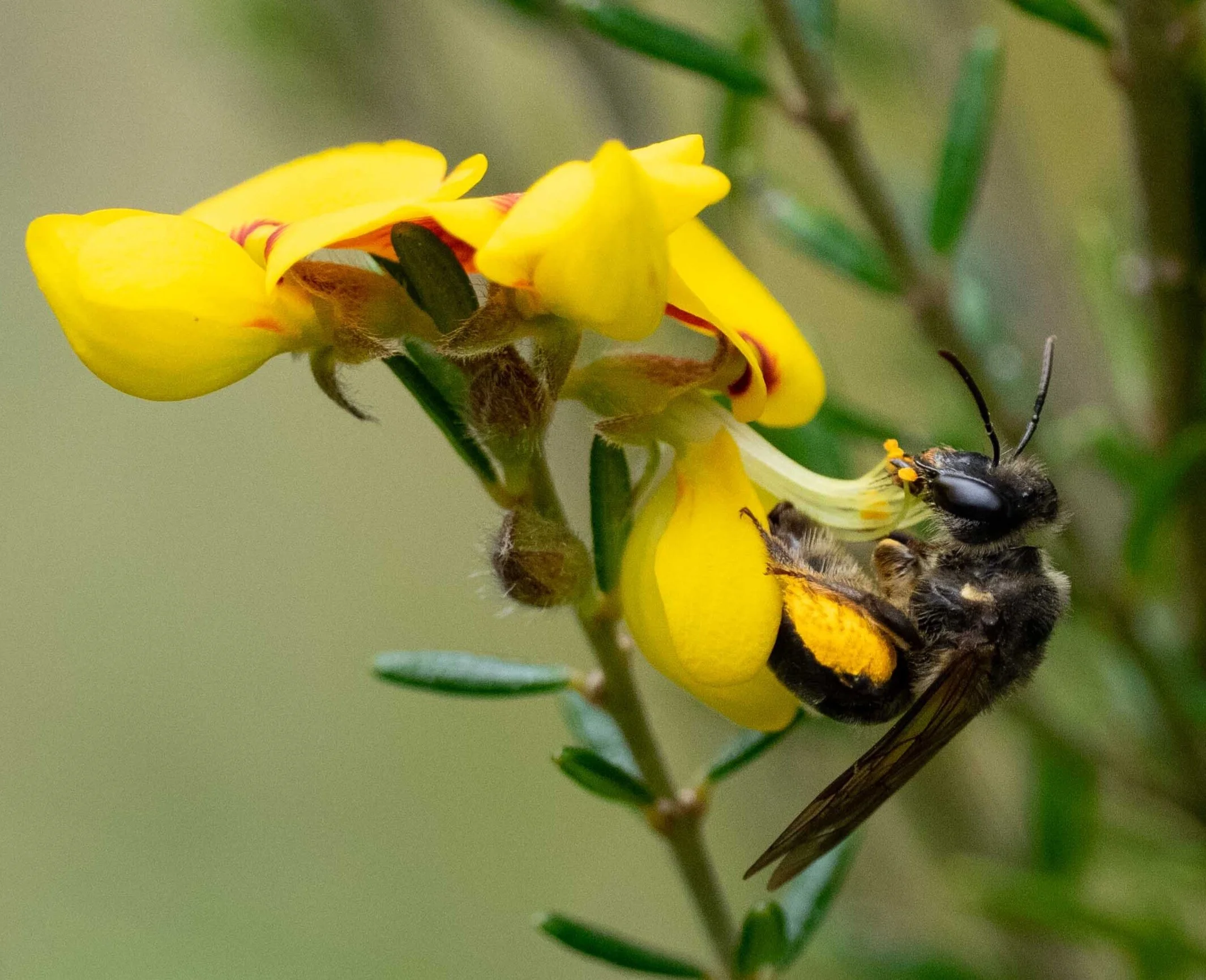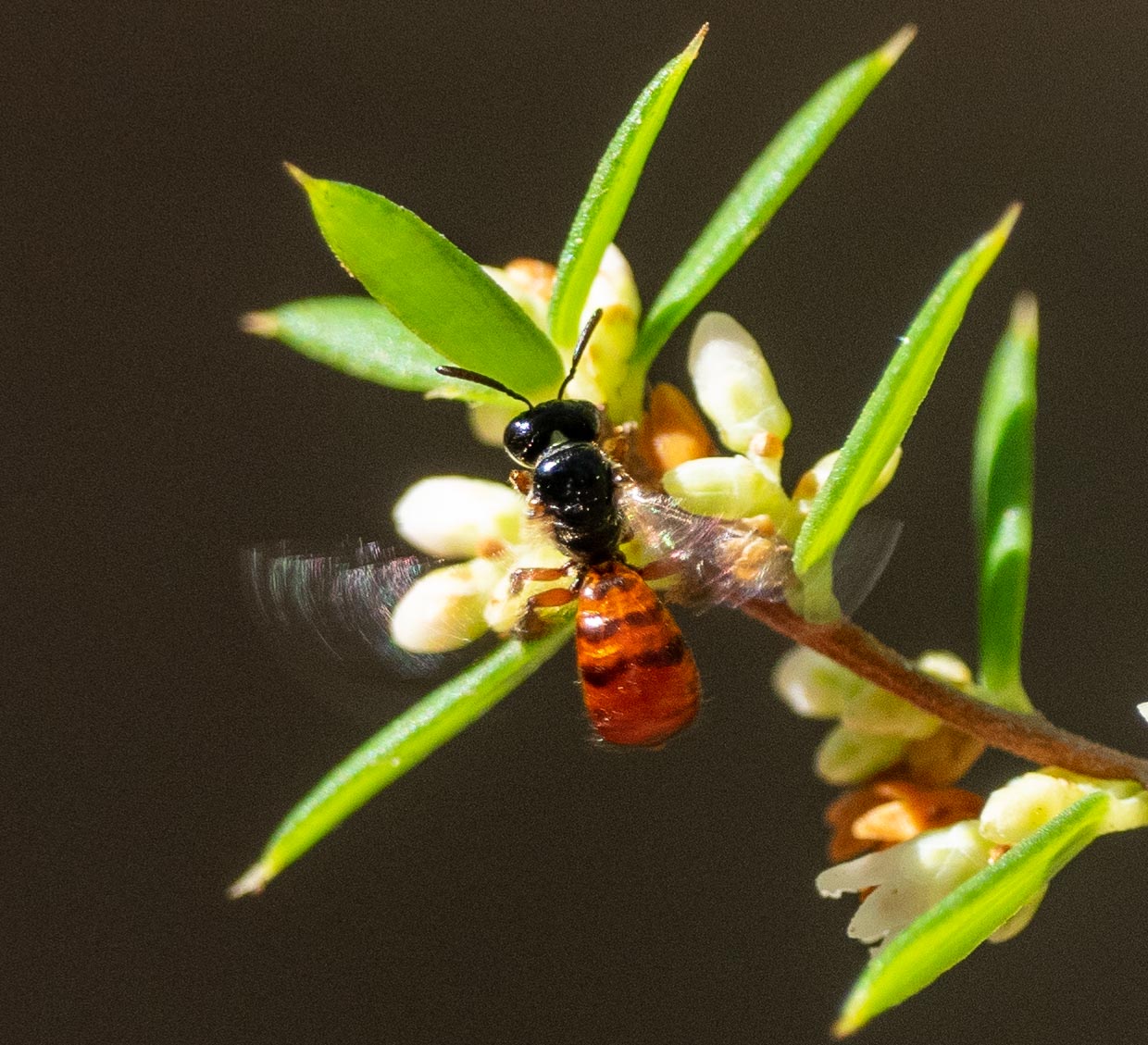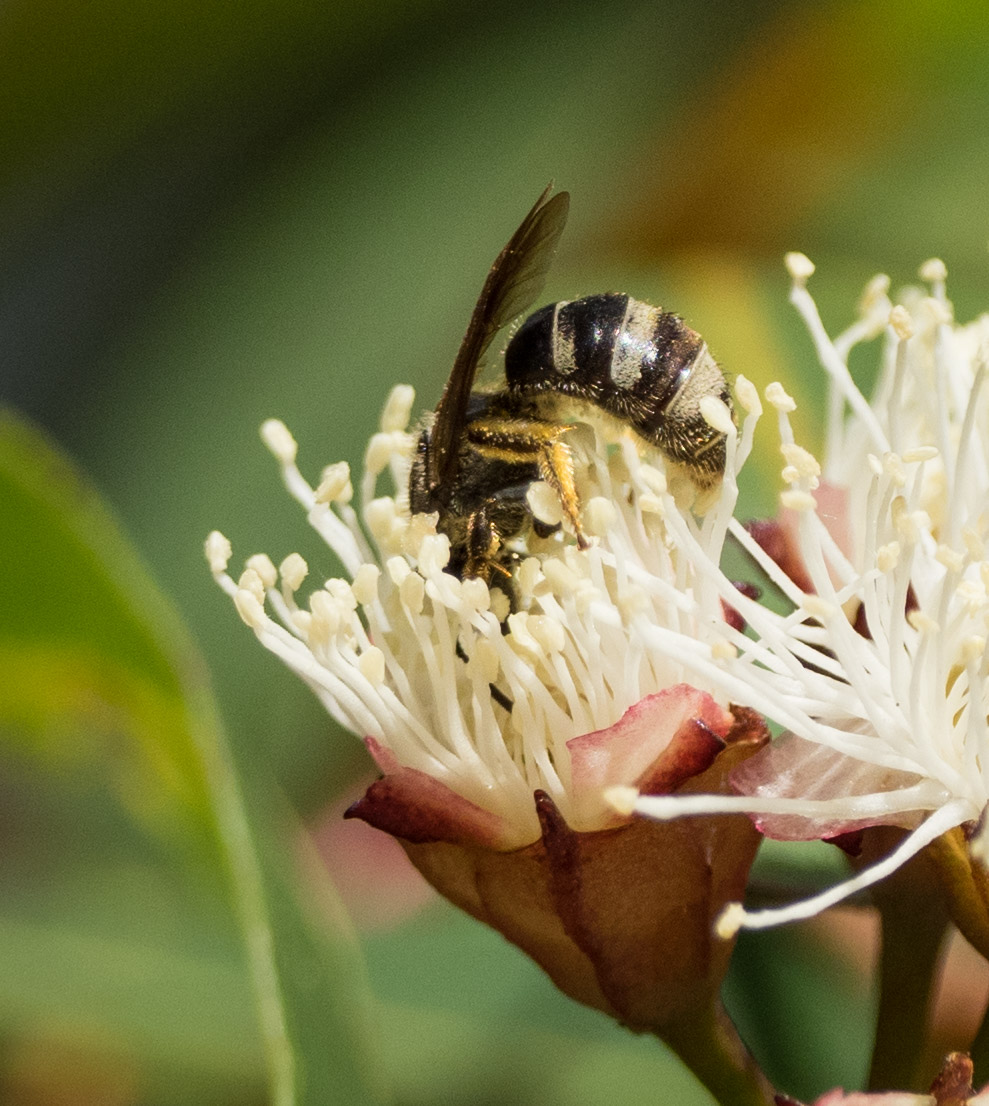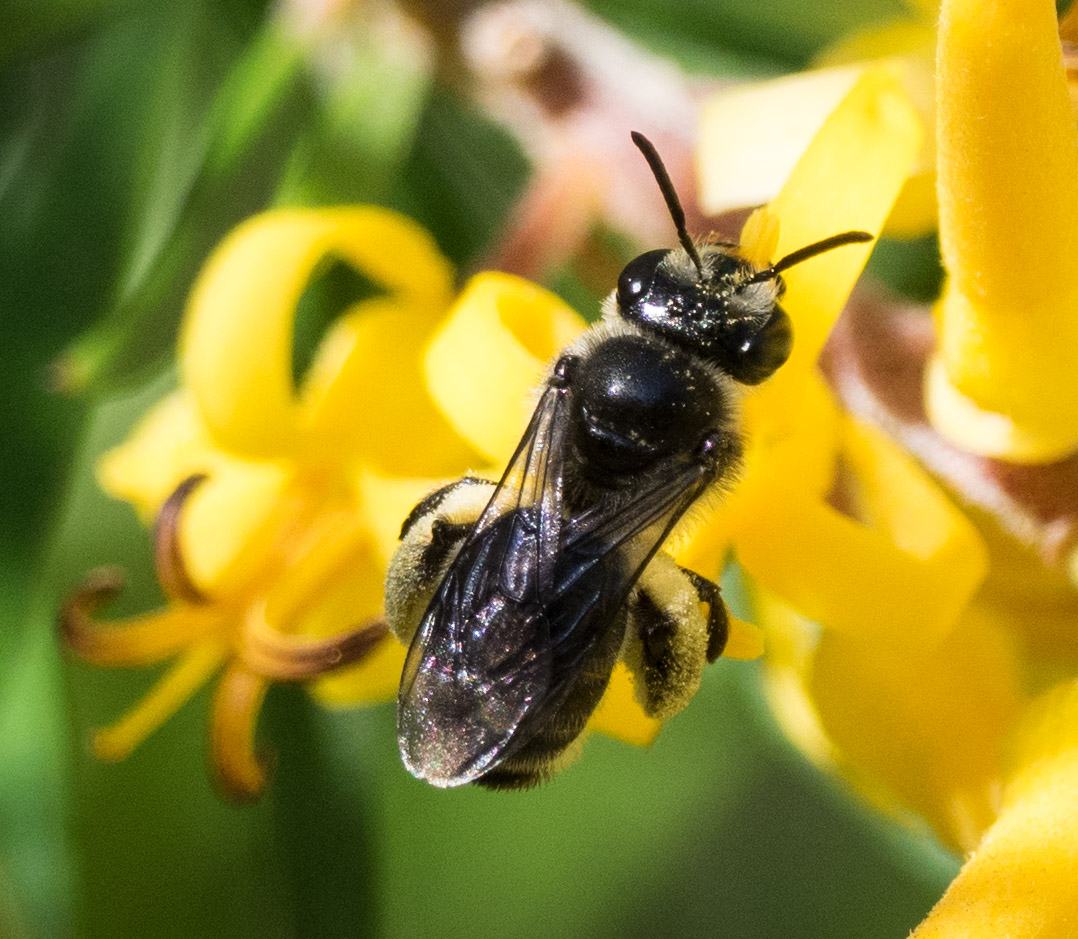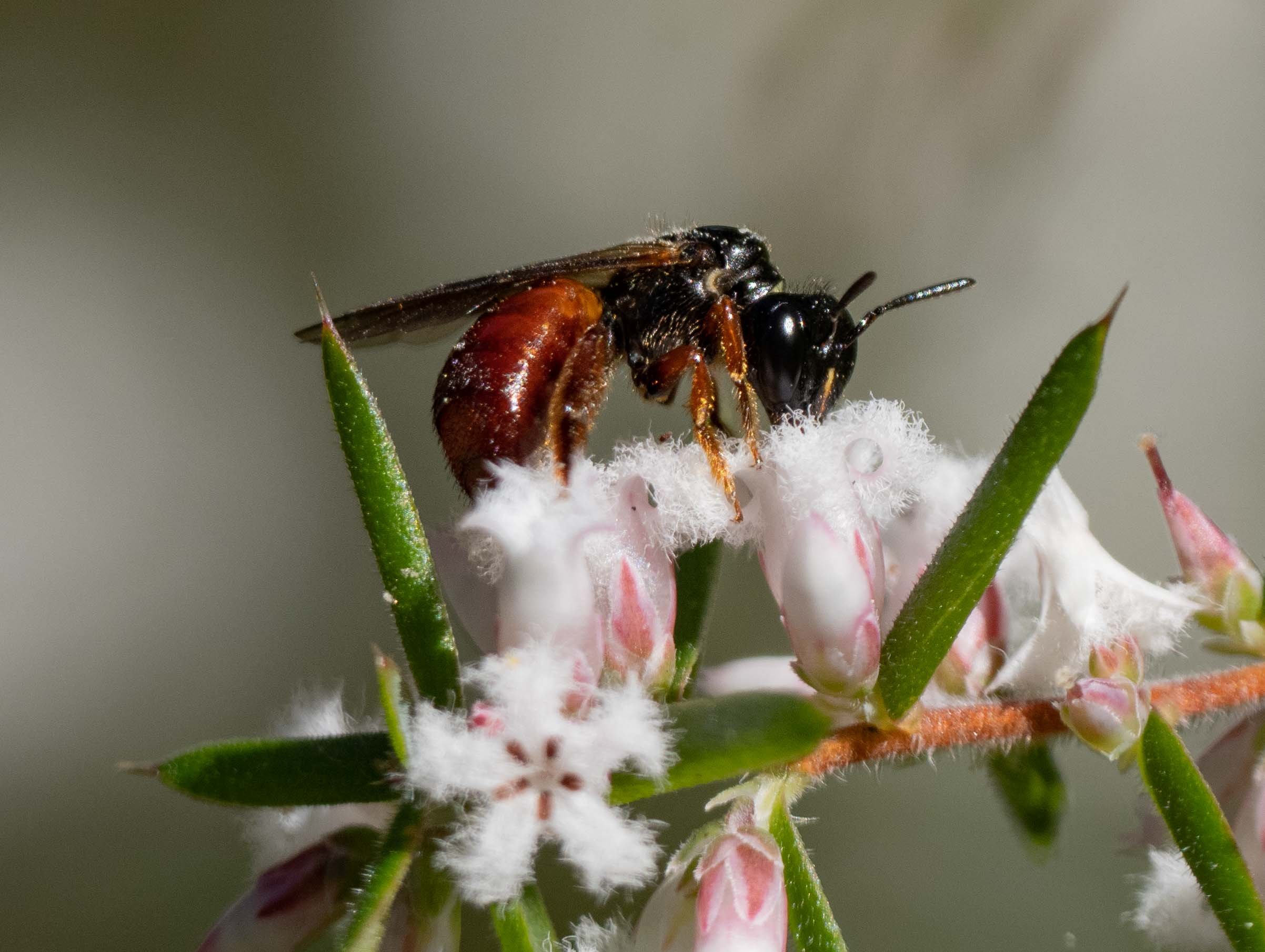
For the past few weeks I’ve been on the lookout, searching among the flowers for visiting insects. The purple pea-flowers of Hardenbergia, the prolific white Pimelea, and the masses of heathy Leucopogon. Honey bees abound but these pests hold no interest for me. It’s the native bees that I’m seeking as I survey the flowers and nearby vegetation.
Nothing, nothing, nothing – until 5 days ago!
On 27th August I made my first sighting. Trichocolletes, a medium-sized and distinctive genus within the family Colletidae. These bees tend to be specialists, and ours definitely favour pea flowers.
First bee of the season
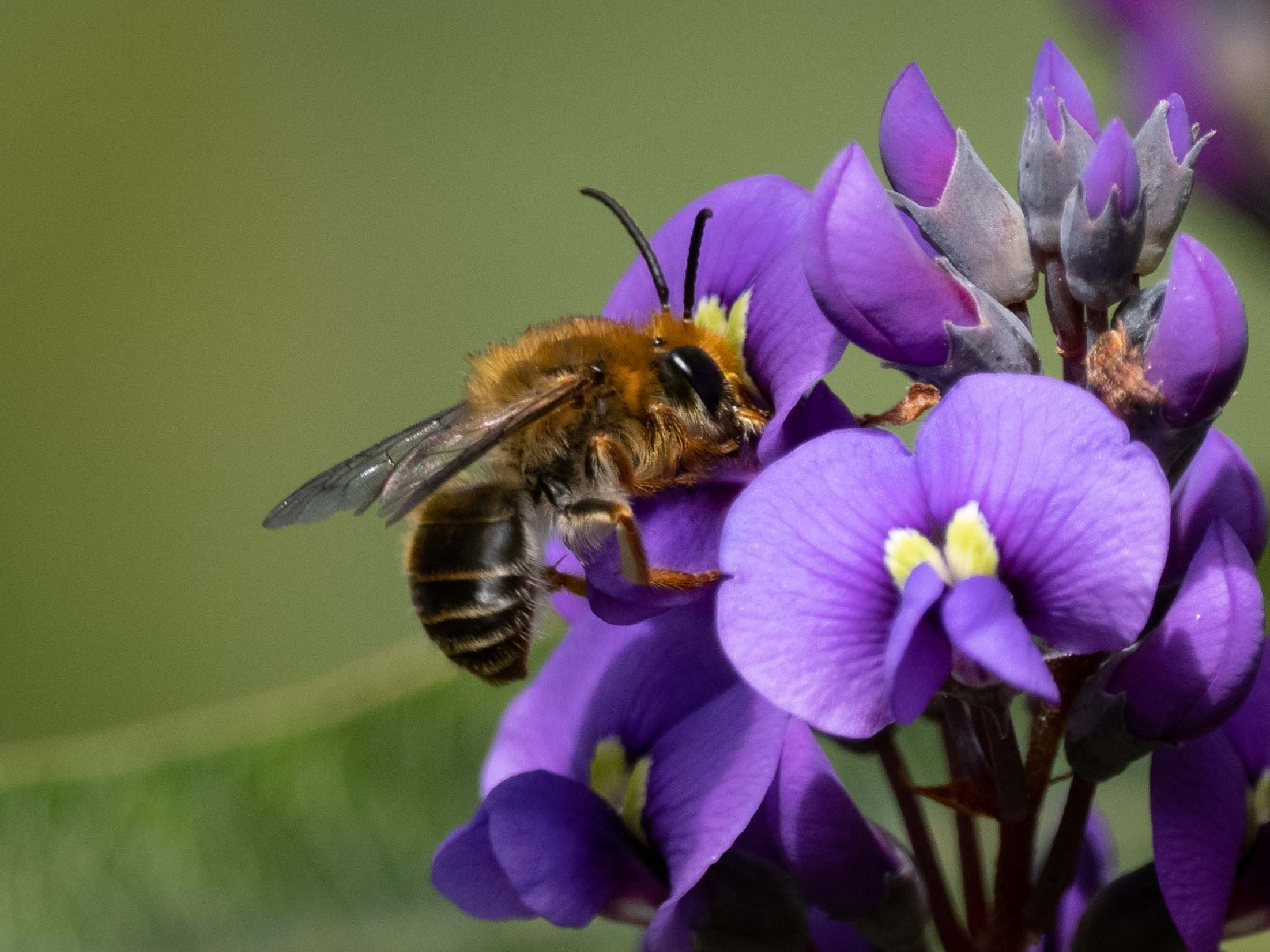
Trichocolletes returns, right on cue.
This was the first bee species to appear last year too … coincidentally, on 31/8/21 (or at least, that was my first sighting, and I monitor the purple pea flowers quite closely).
Hardenbergia is a magnet for the fuzzy, golden-haired Trichocolletes. Females feed and collect pollen, while males hover about noisily, grabbing a mate when they can.
Females nest alone, in the soil*. So the bees I’m seeing now spent winter underground, as pupae. The title of this post is not strictly true. The bees never really left, they just disappeared from view.
[*nesting details are known for only a few species of Trichocolletes and I am not sure which species we have]
Lasioglossum - another bee visiting the pea flowers
In the past few days the number of bees, and the number of species, has exploded. I’m now seeing Exoneura of various sizes, several species of Lasioglossum, an unfamiliar Leioproctus, and even a couple of hairless, masked bees, Hylaeus. That’s three of Australia’s four major bee families represented … already! And spring has barely begun.
Bee-spotting
There’s something quite mesmerising about bee-watching. Each species has a unique ‘jizz’ - a distinctive combination of physical and behavioural traits. For example, Trichocolletes and honey bees are superficially similar, yet Trichocolletes are easily recognised by their flying style and sound. Just as in bird-watching, it takes practice. I confess that this week I’ve done little else than work on my bee-spotting skills.
It helps to know where to look. We regularly prowl the forest trails, on the lookout for emerging insects, flowering plants, and interesting phenomena. I occasionally find bees with this method, but it’s not very efficient. As with all flower-feeding insects, it makes more sense to focus on the flowers.
The current bee activity is most definitely concentrated around the Leucopogon, commonly called Beard-heath. Leucopogon ericoides is particularly spectacular this year. It has regrown extensively, post-fire, and one sunny patch of the forest is a sea of pink and white.

In one part of the forest, Leucopogon ericoides dominates the floral landscape. This is the highest, driest part of the property. It also gets a good deal of sun as the Eucalyptus canopy here is quite sparse, especially so since the fire.
Timing matters too. Bees are typically most active “during the brightest and warmest period of the day” (Houston, 2018). That is certainly my experience here in our southern forest. Even on the warmest days this week, I search in vain until around 11am and by 3pm all is quiet again. Those pesky honey bees are the exception. They tolerate much wider climatic conditions, which is what gives them a competitive edge over most native species. That, and their sheer numbers of course!
Floral perfume is another clue. I have the greatest success in my bee-seeking ventures when I follow the scent trail. Leucopogon flowers can release a sweet, vanilla-like aroma that is quite heady at times. I associate the delicious smell with plants that are in full-sun, and warm. Sheltered, sunny patches around midday are a good bet. Indeed, the link between climatic conditions and floral perfume is well documented. Flowers actively respond to temperature and light by releasing floral odours (Jakobsen & Olsen, 1994), and bees certainly respond. Right now, Leucopogon is everyone’s favourite.
A sense of scale. Many native bees are small, and some are tiny. When comparing photos of different species in the gallery below, the flowers provide a handy reference.
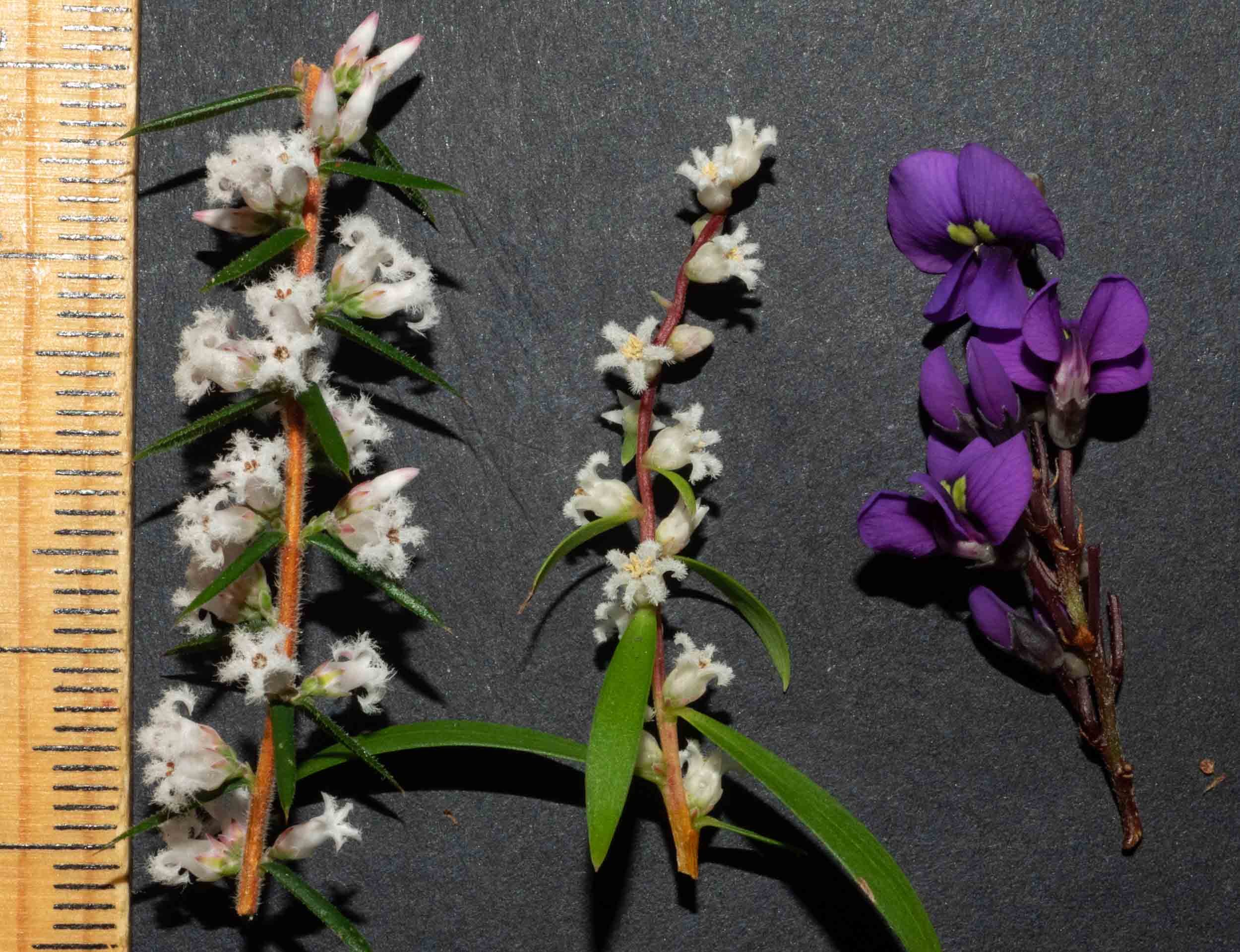
Left: Leucopogon ericoides; Middle: Leucopogon affinis: Right: Hardenbergia violacea
Scale in mm
I collected flowers from both Leucopogon ericoides and Leucopogon affinis (which is also flowering, and also attracting a swag of bees) and measured them. Oh, and Hardenbergia too … for the Trichocolletes.
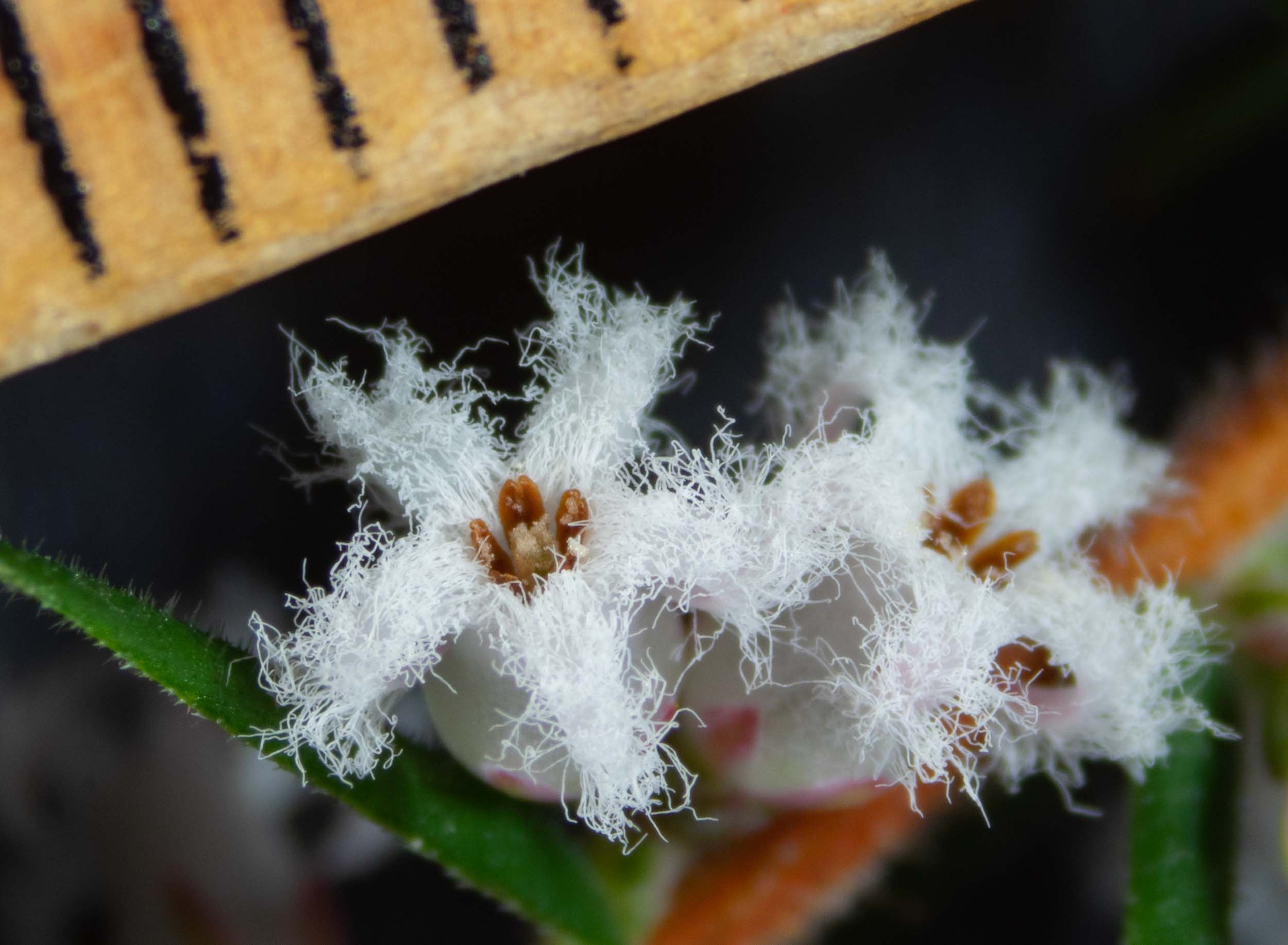

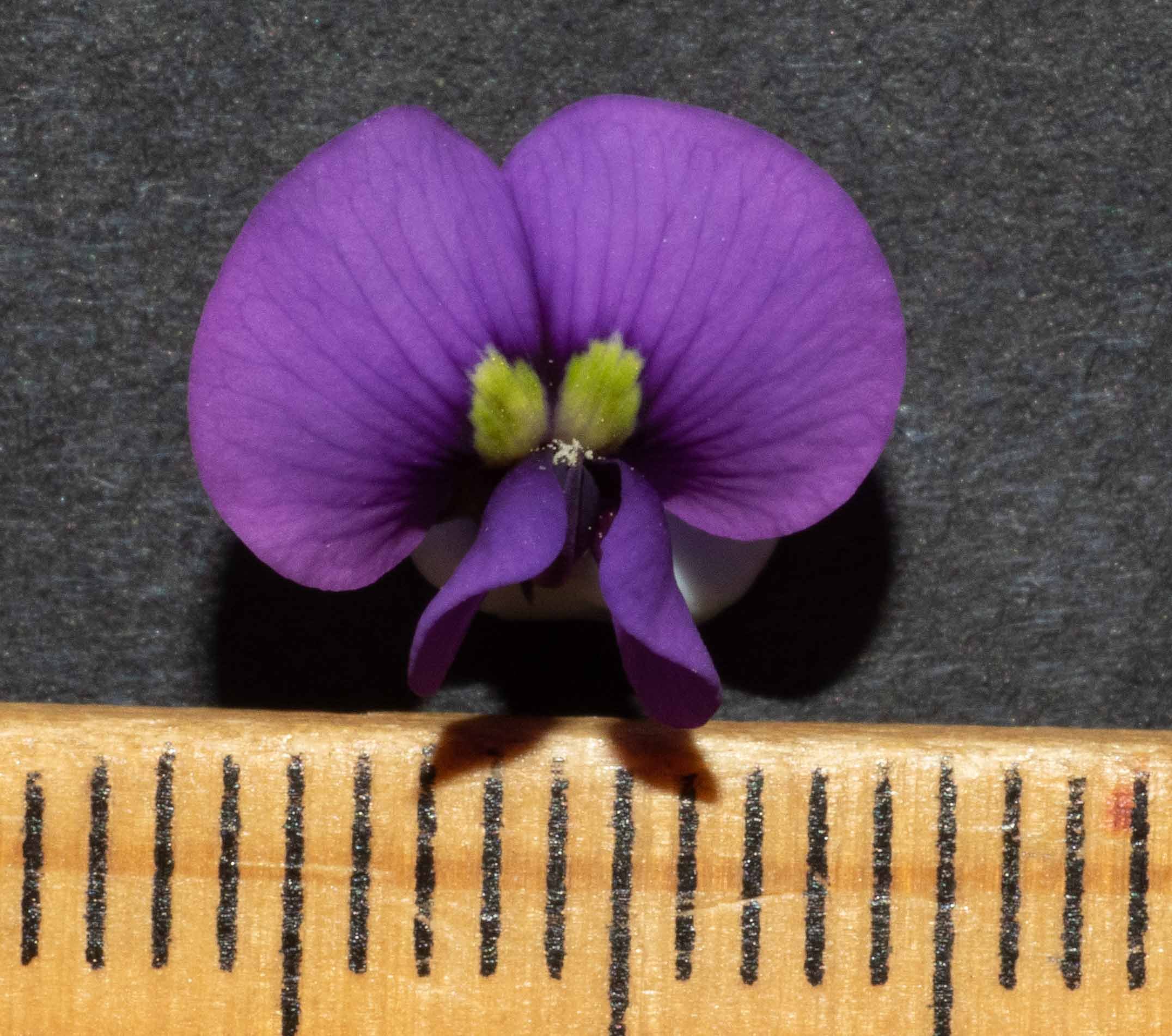
The Leucopogon party
Please note that some bees I can name with confidence, but many of the identifications are simply my best guess.
I believe there is more than one species of Exoneura – their sizes vary greatly!
All photos were taken between 27th August and 1st September.
Contrast the size, shape and colour of the various native bees with the large, familiar honey bee in the last image.
Lasioglossum
(on Leucopogon ericoides)
(see iNaturalist record)
Lasioglossum
(on Leucopogon ericoides)
Exoneura
(on Leucopogon ericoides)
Leioproctus (Goniocolletes) ?
(on Leucopogon affinis)
(see iNaturalist record)
Lasioglossum (Parasphecodes) ?
(on Leucopogon ericoides)
Exoneura
(on Leucopogon affinis)
Exoneura
(on Leucopogon affinis)
Lasioglossum (Parasphecodes)
(on Leucopogon ericoides)
(see iNaturalist record)
Lasioglossum (Parasphecodes)
(on Leucopogon ericoides)
Lasioglossum (Parasphecodes)
(on Leucopogon ericoides)
Exoneura
(on Leucopogon ericoides)
Exoneura
(on Leucopogon affinis)
Exoneura
(on Leucopogon affinis)
Exoneura
(on Leucopogon ericoides)
Lasioglossum (Parasphecodes) ?
(on Leucopogon ericoides)
(see iNaturalist record)
Lasioglossum (Parasphecodes) ?
(on Leucopogon ericoides)
Lasioglossum (Parasphecodes)
(on Leucopogon ericoides)
Lasioglossum (Parasphecodes)
(on Leucopogon ericoides)
Leioproctus (Goniocolletes) - male ?
(on Leucopogon ericoides)
Lasioglossum (Chilalictus)
(on Leucopogon ericoides)
(see iNaturalist record)
Trichocolletes
(on Leucopogon ericoides)
Trichocolletes
(on Leucopogon ericoides)
– although they specialise on peas, they are not above joining in the Leucopogon party
Exoneura
(on Leucopogon ericoides)
Exoneura
(on Leucopogon ericoides)
Exoneura
(on Leucopogon ericoides)
Exoneura
(on Leucopogon ericoides)
Exoneura
(on Leucopogon ericoides)
Beyond bees
Finally, bees are not the only insects hanging about the Leucopogon. I’ve been almost as excited by the hover flies! One is a species I’ve never seen before, and have yet to even hazard a name for. Just one sighting, but a real treat. It’s red! Another I do know … Cyphipelta rufocyanea … although I’ve never before seen so many. And it’s beautiful too, with a silky golden posterior and shiny back.
a mystery … I’m guessing at the family
(see iNaturalist record)
Cyphipelta rufocyanea
(see iNaturalist record)
Newsflash! We just noticed a rather major taxon change. Leucopogon ericoides has moved genus … it is now Styphelia ericoides. Leucopogon affinis remains unchanged. This change is noted in VicFlora and will soon appear in iNaturalist.
References
Houston, T. 2018. A Guide to Native Bees of Australia. CSIRO Publishing, Clayton South, Vic.
Jakobsen, H.B. & Olsen, C.E. 1994. Influence of climatic factors on emission of floral volatiles in situ. Planta, 192: 365-371
Different bees use different strategies when it comes to tackling a pea flower.
A brief return to the ongoing challenge of getting to know our native bees.
An update on my quest to get to know our local bees.
After watching native bees feeding on Persoonia flowers, I work my way to a better understanding of who they are and what they are doing.
Early attempts to become acquainted with the local bee fauna
Insects flood in for a feast, as flowering of Beard-heath reaches a climax

